North Rhine–Westphalia Monocle
North Rhine–Westphalia
The monocle guide to Germany’s region on the rise
Welcome to urbanana, a crescent of creative cities that form the backbone of the German state of North Rhine-Westphalia, which borders the Netherlands and Belgium. Its friendly inhabitants invite you to visit, settle or even start a business.
- NRW is the most populated German state with 18 million cosmopolitan inhabitants who harbour a special spice for life.
- 29,000km of cycle lanes connect the region and its cities offer plenty of green spaces for relaxation and sport.
- Six airports offer up to 400 flights per day, making the area an ideal destination for international visitors and settlers.
- Eighteen of the 50 largest German companies are based in NRW including Bayer, Thyssenkrupp and Eon.
- As well as leading heavy industries, there is a thriving creative scene with many burgeoning start-ups and digital firms.
- More than 150 million people live within a radius of 500km, representing some 31 per cent of the entire EU population.
- There are many exceptionally liveable cities in urbanana including Köln, Düsseldorf, Essen and Bochum.
Germany’s industrial engine and most populated state, North Rhine-Westphalia (nrw) is having a moment. Beyond the heavy manufacturing and precision engineering, and past the fairy-tale castles and dense forests, lies a chain of neat-sized municipalities whose residents are raising the profile of the region by innovative new means. Lovingly dubbed “urbanana” – a crescent-shaped constellation of cities that stretches from Bonn in the south to Bielefeld in the north – nrw’s metropolitan curve is reinventing itself with gusto. Creative industries and independent manufacturers are on the rise, while technology start-ups are sweeping the cities and neighbourhoods that they call Heim.
We decided that it was high time we visited this land of opportunity on the borders of Belgium and the Netherlands and meet the makers and doers whose ingenuity is driving the new mechanisms of progress – while sampling some of that west German hospitality in the process, of course. Willkommen in Nordrhein-Westfalen!
Map
Getting to know the region
North Rhine-Westphalia in western Germany is the nation’s most populous state with 17.9 million residents. Once known as the “land of coal and steel”, nrw remains Germany’s leading industrial region, valued for its seamless blend of cosmopolitan cities and sprawling countryside.
The area was first settled by Germanic tribes and then later by the Romans during the reign of Julius Caesar. In the early Middle Ages it became part of the Holy Roman Empire until 1648, when the signing of the Peace of Westphalia brought the Thirty Years’ War to an end and introduced Germany’s modern nation-state system. Yet it wasn’t until after the end of the Second World War in 1946 that nrw was officially established.
Characterised by woodlands in the northern lowlands of Westphalia and by the verdant hills and river valley in the southern realms of Bergisches Land, Siegerland and Eifel, the state is situated at the heart of Europe. Internally it borders Lower Saxony, Rhineland-Palatinate and Hesse; internationally it shares borders with Belgium in the southwest and the Netherlands in the west.
nrw’s Rhine-Ruhr region, centred around the state capital, Düsseldorf, is the third-largest urban area in western Europe (after Paris and London) and the core of the so-called “Blue Banana”, Europe’s urban-industrial corridor. nrw’s location, infrastructure and river network continue to ensure its influence. Home to more than 40 rivers, including the Rhine, Ruhr and Lippe, and 120 harbours, including the world’s largest inland port in Duisburg, it’s well positioned for trade and travel. The Rhine alone links Germany to Switzerland, Liechtenstein, Austria, France and the Netherlands, which may explain nrw’s fierce European spirit and openness to the world.
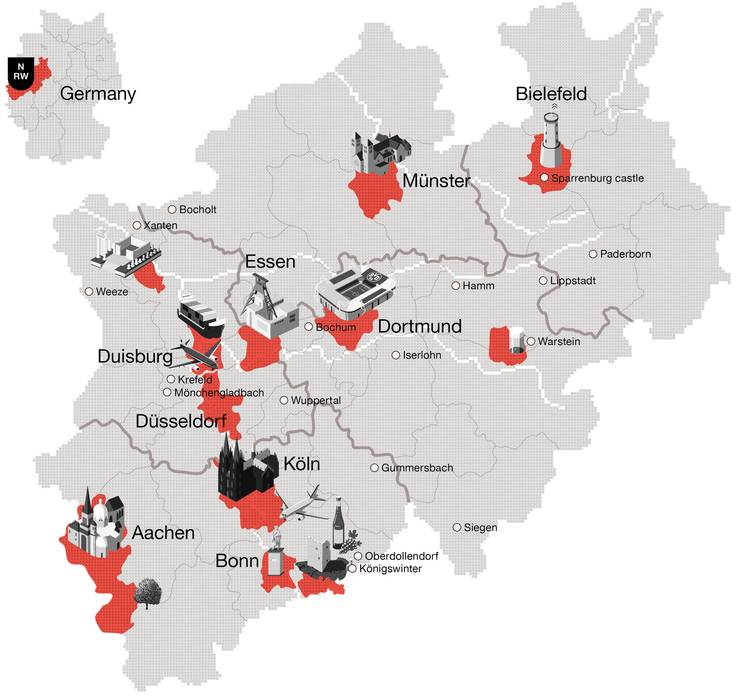
Köln cathedral
Unesco-listed 13th-century cathedral
Zeche Zollverein, Essen
Design museum and cultural complex on a former industrial site
Signal Iduna Park, Dortmund
Germany’s largest football stadium; home of Borussia Dortmund
Düsseldorf International Airport
Germany’s third-largest airport
The port of Duisburg
The world’s largest inland port
Aachen catherdral
One of Europe’s oldest cathedrals, built under Emperor Charlemagne
Köln Bonn Airport
Connects more than 100 destinations
UN campus, Bonn
Seat of 23 UN organisations
Drachenfels, Königswinter
Historic castle ruins in Siebengebirge
Oberdollendorf wine region
nrw’s storied vineyards
Warsteiner brewery, Warstein
In Arnsberg Forest Nature Park
Archaeological park, Xanten
Ruins of ancient Roman settlement Colonia Ulpia Traiana
Münster cathedral
The St-Paulus-Dom is a symbol of the city
Sparrenburg castle, Bielefeld
This historic fortress dates from 1250
Key sites
Located in the heart of Europe, getting to and around nrw is a cinch. Six airports, including international hubs in Düsseldorf and Köln-Bonn, offer a host of direct flight routes. The state is also easy to reach by train, thanks to its rail network of 6,000km of track, and via the Autobahnen, which ensures swift links to the European road network at limitless speeds. Here are a few stop-offs on your journey, key connections and landmarks to admire.
Industry
Get to work
As Germany’s most important economic region, university cluster and investment hub, NRW attracts international talent and is a hotbed of global players such as Aldi, Bayer, Bertelsmann, Deutsche Post DHL, Henkel and Miele. But it’s the SMEs that form the economic backbone of the state. Here’s our overview of old and new businesses that provide the torque to power an engine of industrial activity.
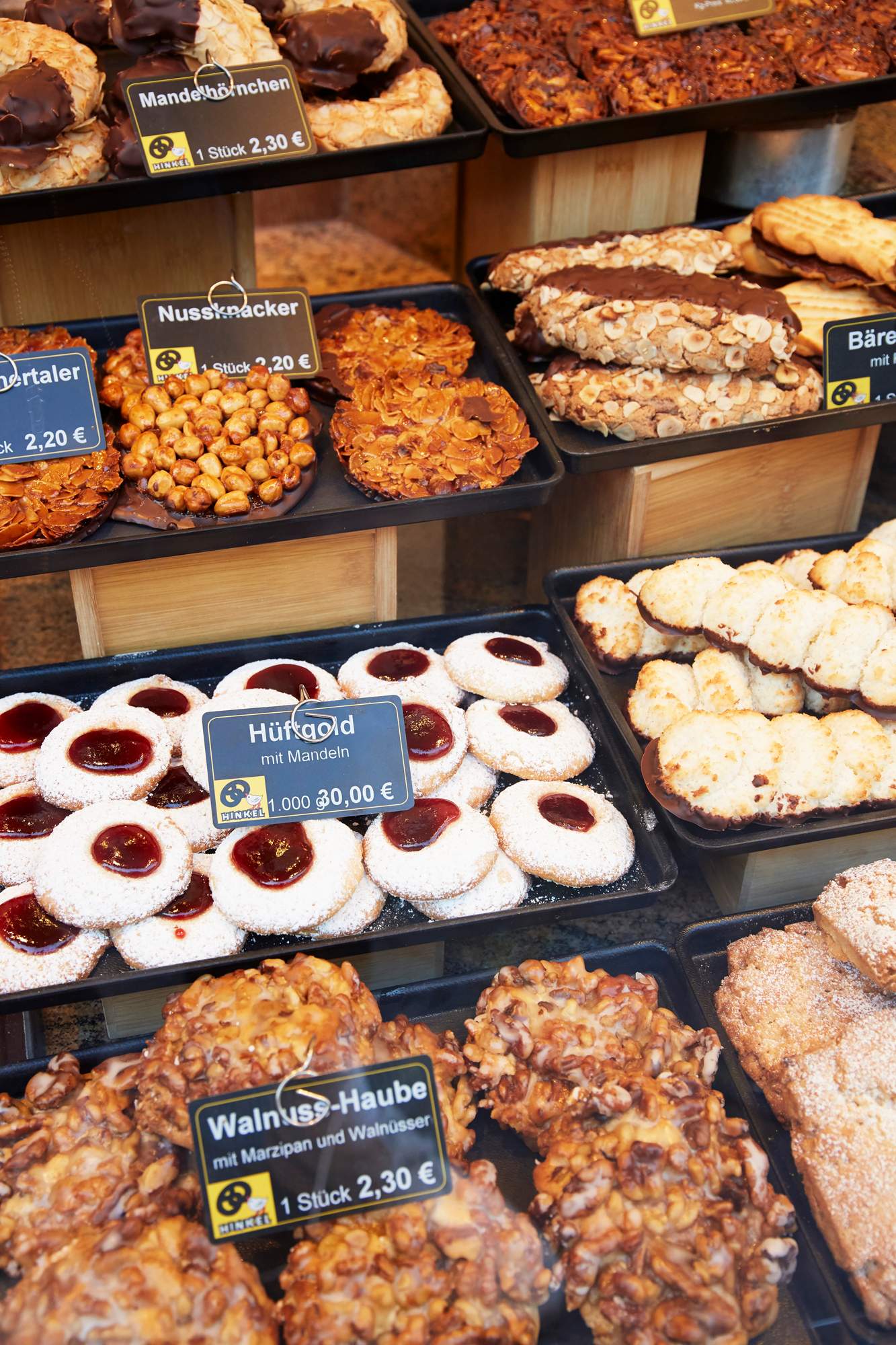
1.
Hinkel, Düsseldorf
To say that Germans are fond of bread is an understatement; the nation’s bread culture is on Unesco’s Intangible Cultural Heritage list. Josef Hinkel’s two branches in Düsseldorf’s Old Town have become institutions that offer some 60 varieties.“I’m a big collector of recipes, from Greek smyrneiko to the French baguette,” says Hinkel.
baeckerei-hinkel.de
Robertino Wild, founder and CEO of Capricorn, Düsseldorf
Capricorn is a leader in customised lightweight automotive engineering for the motorsport industry. We sit down with ceo Robertino Wild.
What makes Capricorn unique?
We keep up an entrepreneurial spirit even after 30 years and we act responsibly – socially and economically – to try to make the region an even better place.
What makes NRW a good place to settle?
Düsseldorf is large enough to be a city and small enough to be human. Historically, this area was one of the first in Germany to welcome foreigners and a mix always helps.
Any advice for newcomers?
Setting up is straightforward. You will witness “German efficiency” in person. Being half-Italian, I can say that without sounding too German!
Start-ups in the region
Hafervoll, Bergisch Gladbach
Hafervoll’s fresh cereal bars that first appeared in 2013 are now on sale in Germany, Austria and Switzerland.
hafervoll.de
Brickspaces, Düsseldorf
This online platform, brought to life in 2014, offers commercial spaces to rent from one day up to one year.
brickspaces.de
Scanbot, Bonn
Founded in 2011, the software firm creates scanning solutions for myriad purposes on smartphones.
scanbot.io
Flaschenpost, Münster
Since 2016, Flaschenpost has been delivering groceries within two hours.
flaschenpost.de
iTravel, Cologne
This online travel consultancy has been helping folk arrange custom holidays with its app since 2011.
itravel.de
Schüttflix, Gütersloh
Established in 2018, Schüttflix organises bulk goods to be delivered to construction and industrial sites.
schuettflix.de
Deepl, Köln
This 2017-founded online translation start-up develops AI systems for languages and communication.
deepl.co
m
2.
Manufactum, Waltrop
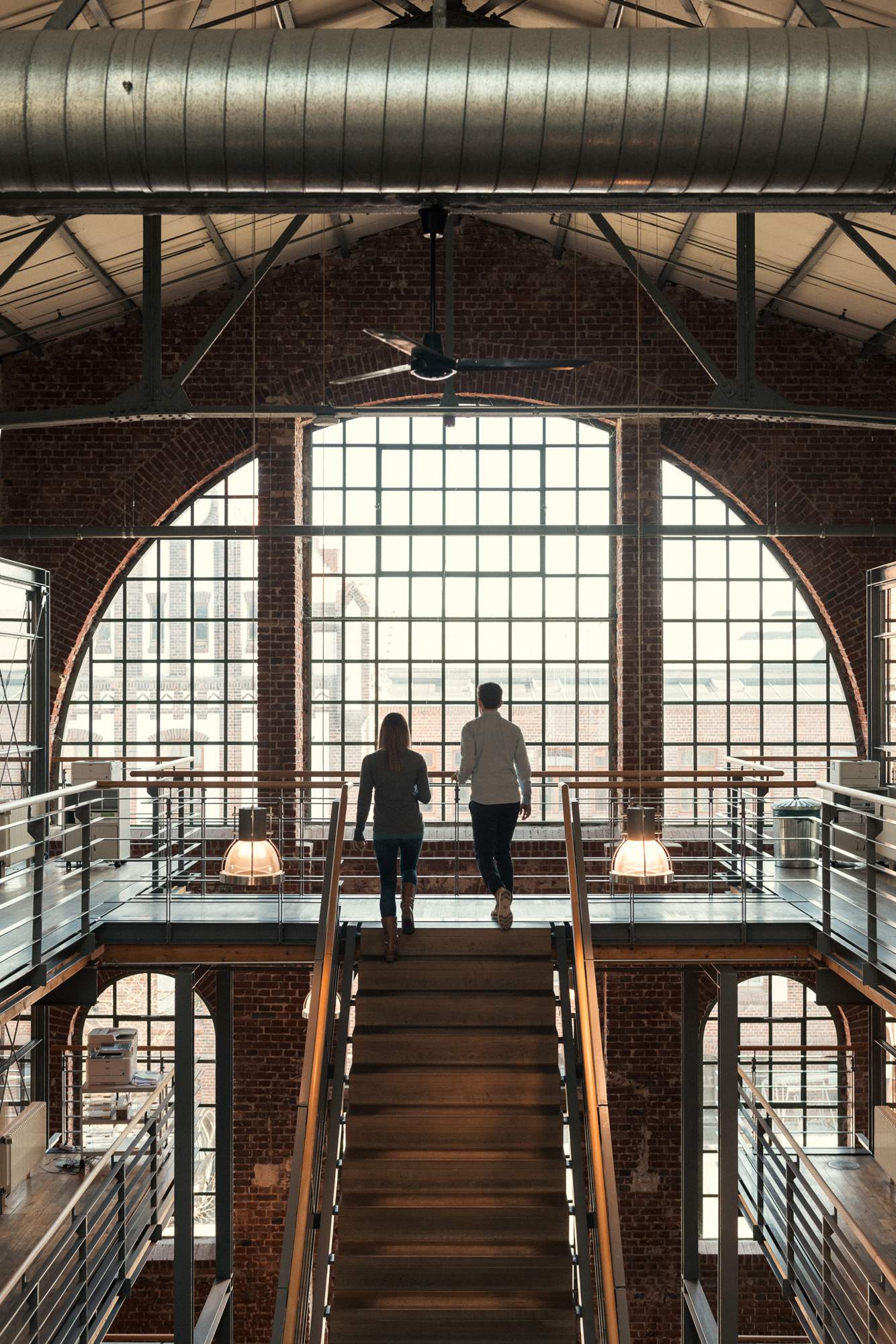
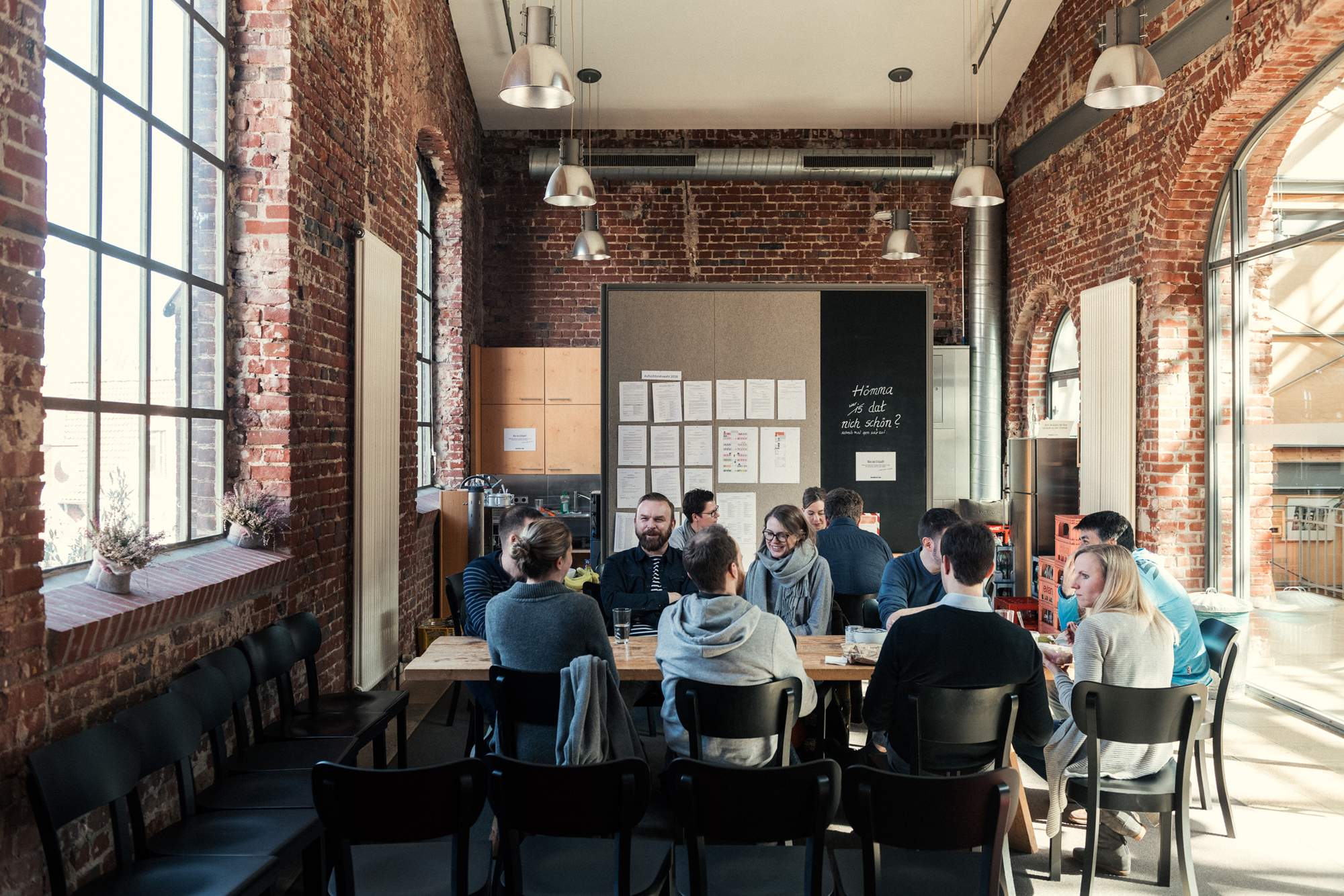
Selling functional, long-lasting products from its headquarters in Waltrop, retailer Manufactum presents a bold statement against wanton consumer culture. With more than 8,500 built-to-last items on offer – from homeware and stationery to clothing and cosmetics – and 11 shops across Germany, it’s safe to say that the firm is a go-to for many. Also, its catalogue has attained near cult status among its readers.
manufactum.com
Bonn, big business hub
When the bureaucrats upped sticks to set up the new capital in Berlin in 1991, Bonn was left with a glut of empty offices, which the city cleverly offered as incentives to global businesses and organisaions. The influx of industry in subsequent years increased the city’s international community and the ex-administrative hub became a magnet for outside investment.

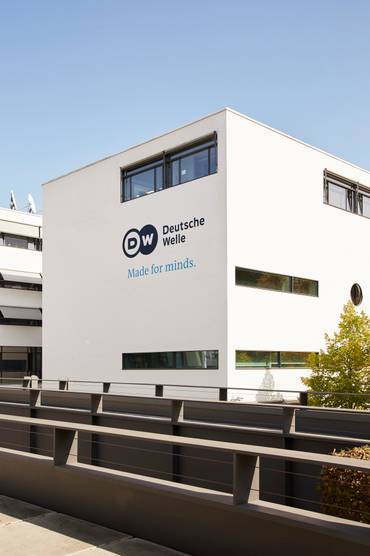
Of those to gain from the renewed activity are some of Germany’s most iconic commercial titans. Deutsche Post dhl, Deutsche Telekom, Deutsche Welle, Deutsche Postbank, Haribo and T-Mobile have their HQs in Bonn. And international organisations, such as the UN and the ipc (see section six) and Fairtrade, all benefit from the city’s welcoming attitude.
3.
Duisburg Harbour, Duisburg

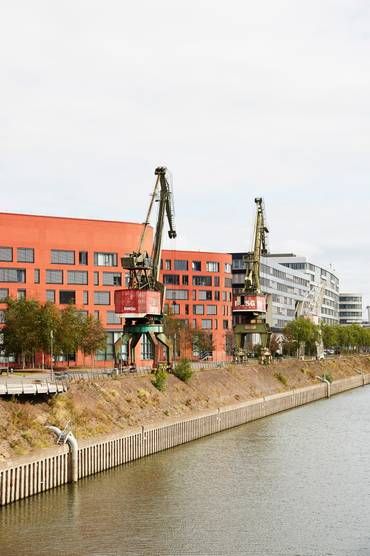
Duisburg’s inland harbour is the largest of its kind and central Europe’s chief logistics hub, where freight trains and ships start their journeys across continents and seas. Annually, 20,000 ships and 25,000 trains enter the port, which encompasses 21 basins, eight container terminals, five import coal terminals and 19 facilities for liquid goods.
All in all, this doozy of a port handles 61.1 million tonnes of cargo a year, employs 47,000 people and has a turnover of €292.6m. Not only a focal point for trade within Europe, it’s vital as the western terminus of China’s new Silk Road.
duisport.de
The sectors by city
Köln is nrw’s media hub and fertile ground for start-ups. Düsseldorf is close on its heels, with a first-rate creative economy. The former West German capital Bonn remains an important location for international organisations. And the historic spa town of Aachen is a place for trade and manufacturing.
4.
Löwensenf, Düsseldorf
Löwensenf, with its majestic lion logo, has become a symbol of Düsseldorf, even though Otto and Frieda Frenzel founded their mustard business in Metz in 1903. After the First World War, the family settled in Düsseldorf and the company continues to manufacture in its factory near the airport following the original family recipe.
loewensenf.de
Bright ideas
1.
Armedangels, Köln
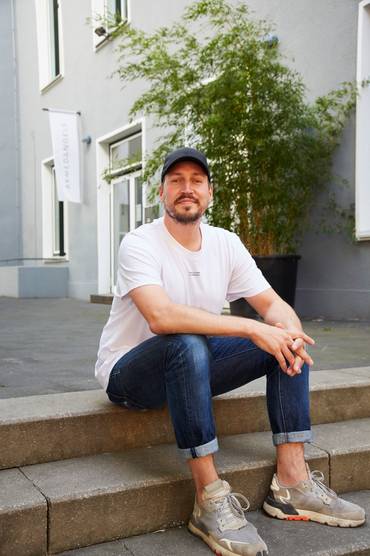

When Martin Höfeler started producing T-shirts in 2007, he made it his mission to create a profitable clothing line that would both look and do good. “It was clear that first the design should appeal to the customer,” he says. “You cannot expect that he or she needs to decide between looking good and feeling shitty or looking shitty and feeling good. You need to combine the two.”
armedangels.com
Start-up incubators across the region
One in five German start-ups gets its start in nrw. With 68 universities and many international businesses, there is no lack of incubators. The accelerator Startplatz has branches in Köln and Düsseldorf; Startup Grind, the world’s largest community of start-ups, founders and innovators, has a chapter in Aachen; and Digital Hub offers accelerators and co-working spaces in Bonn, Münster and more.
As part of the Start-up Centers of Excellence nrw programme, the Ministry of Economic Affairs will be funding six universities with up to €150m in total until 2024, which will help the rwth Aachen open Europe’s largest tech incubator and further support Ruhr-University Bochum’s Worldfactory start-up project.

2.
RefresherBoxx, Aachen
The co-founders of this Aachen-based start-up met at an event for entrepreneurs in 2017 and launched RefresherBoxx – a smart wardrobe that presses and cleans clothing by eliminating viruses, bacteria, fungi and other micro-organisms – a year later. It was designed for use in hotels, businesses and at home but when the pandemic hit, its founders discovered an additional use for it in hospitals to help healthcare workers disinfect their uniforms and masks. “We wanted to create a sustainable laundry solution,” says co-founder Gernot Sümmermann.
refresherboxx.com
3.
Meisteratelier für Geigenbau, Aachen

Judith Marie Huppertz and Christoph Verstraeten were a couple long before they went into business. In 2015 they opened their workshop in Huppertz’s hometown, Aachen, where they restore and custom-build violins, violas and cellos. Inspired by the old Italian and Flemish violin-makers of the 17th and 18th centuries, the duo selects the finest woods for their handmade pieces on their travels. “What we love is that we create something that lasts. The oldest violin – still played today – is almost 500 years old,” says Huppertz.
geigenbau-aachen.com
4.
Nemos, Duisburg
Best known for its harbour, the city of Duisburg is a fitting base for Nemos, a start-up founded in 2012 with the goal of developing a device that can generate electricity from ocean waves. Headed by Jan Peckolt, the team introduced its latest Wave Energy Converter prototype last year, which is currently being tested in Ostend, Belgium.
nemos.org
5.
Tomorrow Is Another Day, Köln and Düsseldorf
Eva Güdel is a superstar in the fashion business. Her eye for scouting models with cutting-edge looks has won her the attention of Raf Simons, Balenciaga, Tom Ford and others who regularly employ her talent for runway shows and campaigns. Güdel divides her time between Köln and Düsseldorf and appreciates the easy reach. “In Düsseldorf it is 10 minutes from my house to the office, the same time by car to the airport,” she says. “In Köln I can go to any restaurant, museum or show in 10 minutes.”
tomorrowisanotherday.de
Sebastian Borek, founder of Founders’ Foundation, Bielefeld
Since 2016, the Founder’s Foundation has served as an invaluable institution for emerging businesses in the region. With all the teaching and resources necessary, the start-up school invites young entrepreneurs to develop their ideas from blueprints to working models. Founder Sebastian Borek tells us more about his institution.
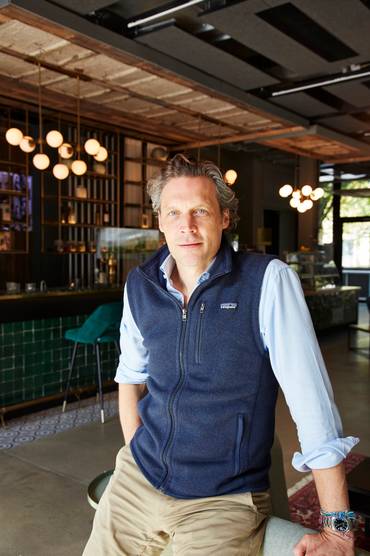
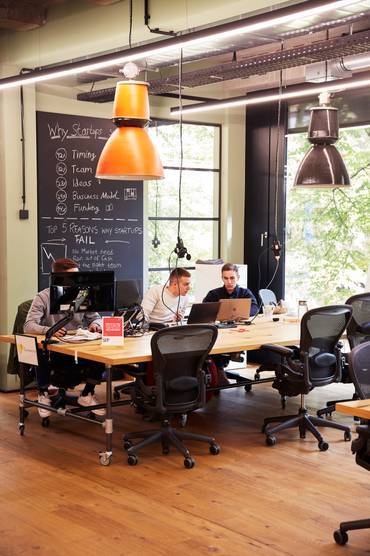
What do you provide?
We find talent from all backgrounds and invite them to our programme so we can show them how to build a start-up. We want to provide them with a space to work and guidance on their journey. And we provide a new generation of businesspeople for Bielefeld – this is important, we feel.
Why launch in Bielefeld?
This region has a strong legacy of big companies; the 16 largest companies here are family-owned and have a combined turnover of €70bn. But while it was a powerful industrial region, there was no start-up scene. We wanted to build an ecosystem for new companies from the ground up.
Any success stories?
Over the past four years we have developed more than 28 companies. They came out of our accelerator programme and have attracted more than €20m in venture capital, creating some 500 jobs and bringing in government funding of about €25m for businesses in the region.
foundersfoundation.de
6.
Boxine, Düsseldorf
Since its launch in 2016, the Toniebox has become a staple in children’s bedrooms in Germany and beyond. The cushioned cube speaker plays music, audio dramas and recordings upon contact with one of hundreds of hand-painted Tonie figurines.
“I’d grown up with cassette players and realised there was no user-friendly, playful alternative for my children,” says co-founder Patric Fassbender, who joined forces with Marcus Stahl to realise his idea. The company has sold more than 20 million Tonies around the world and aims to keep growing the Tonie universe.
tonies.de
7.
Dr Schrammek, Essen
Dr Christine Schrammek Kosmetik (Schrammek, for short) is the firm behind the BB creams and green peels that have turned the world of beauty on its head. The brand’s “made in Germany” products are some of the best in make-up and skincare, building on more than 60 years of experience and operated by the third generation of the Schrammek family. Thousands of stockists in more than 60 countries are a testament to the Essen-based cosmetics giant’s success – as is the youthful skin of its satisfied customers worldwide.
schrammek.com
Media
News and views
With more than 25,000 companies and an annual turnover of €143bn, NRW is one of Europe’s leading media hubs and has the continent’s highest concentration of publishers. Unassuming Gütersloh is home to Bertelsmann; Essen is the base of Funke Media Group; and Köln is the birthplace of Taschen. Beyond the printed word, NRW is well versed in film, radio and television too.
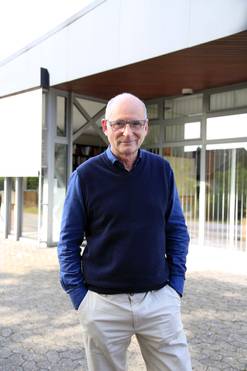
Christof Kerber, Bielefeld
Christof Kerber, publisher of Kerber Verlag, has led the production of handsome books for emerging artists since 1985, following his assumption of the family printing press in Bielefeld. As one of a handful of German art-book publishers that prints in-house, each of the 100 titles released by the imprint each year is made to different specifications. Kerber tells us more about his business, the industry and the region.
Why are you based in Bielefeld?
We are not a Berlin start-up; we are an established company and this is where we have been for generations. My grandfather started the family printing company here in 1954.
What sort of work do you specialise in?
We work mostly with young international artists who are on their way to becoming famous.
Which local artists and institutions have you worked with?
We recently worked on a book with Markus Oehlen, as well as the Pablo Picasso Art Museum in Münster.
kerberverlag.com
Mike Meiré, co-founder of Meiré & Meiré, Köln
Opened in 1987 by brothers Mike and Marc Meiré, design agency and creative consultancy Meiré & Meiré is an institution in Germany. We sit down with Mike to talk business.
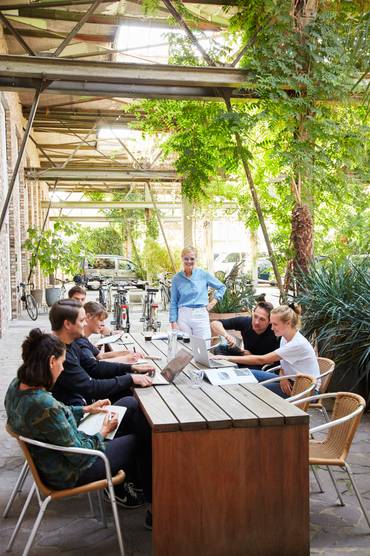
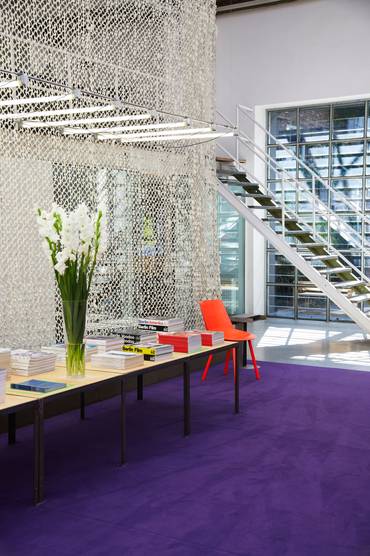
Why work in Köln?
It’s inspiring and draws a global crowd. There are exhibitions and major fairs from furniture to food.
What is NRW’s creative landscape like?
Many artists and designers are based in this region and have helped put Köln on the global art map. More than 200,000 students attend the universities in Köln and Düsseldorf and that shapes the cities.
What about NRW’s art scene?
On one hand you have offbeat spaces like AK Raum; on the other you have recognised galleries such as Daniel Buchholz with a 30-year history.
Your favourite thing about Köln?
It’s not just a city, it’s a mentality.
meireundmeire.com
1.
Funke Mediengruppe, Essen
The Funke Media Group originated in 1948, when Jakob Funke co-founded the Westdeutsche Allgemeine Zeitung (waz). Since then the family business, which opened its new HQ in Essen last year, has grown into one of Germany’s leading newspaper and magazine publishers, with 6,500 staff and an annual turnover of €1.3bn. It specialises in regional publications – including nrw’s waz and Westfalenpost – and has majority stakes in 12 local radio stations, various digital offerings and runs its own printing plants.
funkemedien.de
2.
Bertelsmann, Gütersloh
Among the largest media conglomerates in the world, Bertelsmann’s empire encompasses Penguin Random House publishing, international music publisher-cum-label bmg and rtl TV and radio. The company recorded a total revenue of €18bn last year from its HQ in Gütersloh, with more than 100,000 employees worldwide. And its presence is felt beyond the media world, with it funding start-ups such as the Founders Foundation in Bielefeld (see section 2) and online education initiatives under the Bertelsmann Education Group moniker.
bertelsmann.com
3.
German TV in the region
nrw is Germany’s top TV hub and Köln is the beating heart of the industry. It’s the base of many studios and international production companies, as well as a big draw for TV productions such as Deutschland 83. And what would the cult series Tatort (Scene of the Crime) be without nrw? Köln, Münster and Dortmund are central to Germany’s longest-running drama, airing since 1970.
4.
Handelsblatt Media Group, Düsseldorf
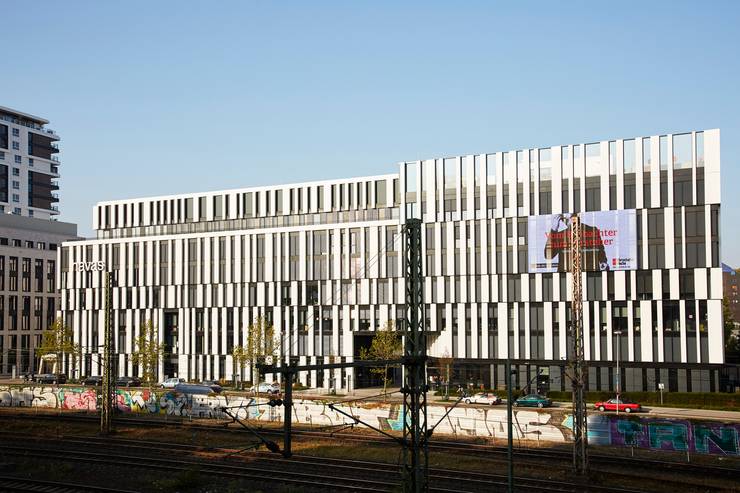
The Handelsblatt Media Group is Germany’s primary source for business and financial reporting. In 2018, the 74-year-old business moved its 1,000 employees into a new office building on Toulouser Allee, renewing its dedication to the state capital and the newspaper industry. With publications such as Handelsblatt and Wirtschaftswoche, as well as the youth news website Orange and specialist media offerings, the group is well positioned to thrive in today’s changing media landscape.
handelsblattgroup.com
Fit to print
Northern nrw packs a punch with its print media offerings. The region’s cornucopia of magazines, newspapers and periodicals is the result of a historic (and contemporary) press industry that is thriving, bolstered by the nearby presence of the headquarters of multinational media empire Bertelsmann in Gütersloh (see facing page). A healthy ecosystem of independent presses – including printer and publishing house Kerber Verlag (see facing page) – help to turn out community magazines.
Newspapers Westfallen-Blat and Neue Westfälische keep Ostwestfalen-Lippe’s residents in the know, while those in Münsterland might be better served by dipping into local sheets Westfälische Nachrichten and Münstersche Zeitung. Even for print-happy Germany, this swathe of the country is a periodical-lover’s delight.
Public broadcasters
No state in Germany has more listeners than nrw, whose three primary public stations have been broadcasting for more than 50 years. They include Europe’s largest public-service broadcaster wdr, public international broadcaster Deutsche Welle and national public radio broadcaster Deutschlandradio.
Arts
On display
NRW’s big cities have shaped its cultural landscape and where coal mines and steelworks once stood, museums, theatres and studios have stepped in. The Unesco-listed Zeche Zollverein is emblematic of this evolution, while artists such as Sigmar Polke honed their craft at Düsseldorf’s Kunstakademie and electro pioneers Kraftwerk had their start at the Robert Schumann University of Music.
1.
Kunsthalle, Bielefeld

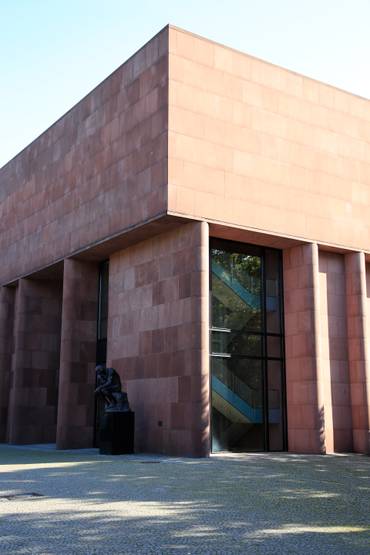
Designed by US architect Philip Johnson, Bielefeld’s Kunsthalle hosts an imposing collection of contemporary and modern art, including everything from drawings by Picasso to paintings from Man Ray. It’s the only museum building Johnson ever created in Europe and was met with bemusement when it first opened in 1968. However, Bielefeld’s residents can now regularly be found enjoying the sandstone contours of the structure from its gardens, picnicking among sculptures by Auguste Rodin, Sol LeWitt and Ólafur Elíasson.
kunsthalle-bielefeld.de
Thomas Ruff, photographer, Düsseldorf
Thomas Ruff is a world-renowned snapper who studied under Bernd and Hilla Becher at the Kunstakademie Düsseldorf. We visited Ruff at his Herzog & de Meuron-designed studio in Düsseldorf to learn about his work, a portion of which is currently on show at the K20 Kunstsammlung.
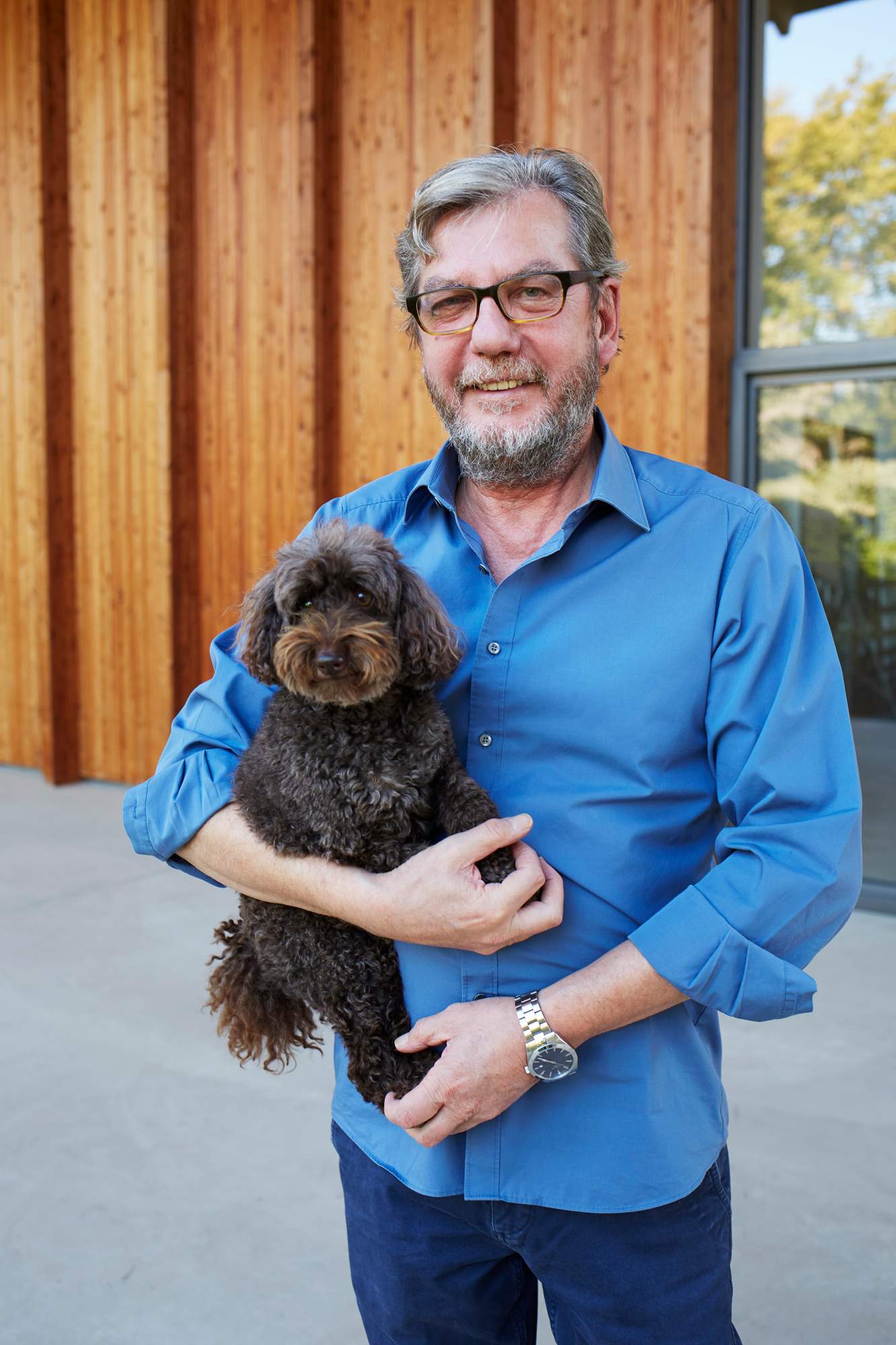
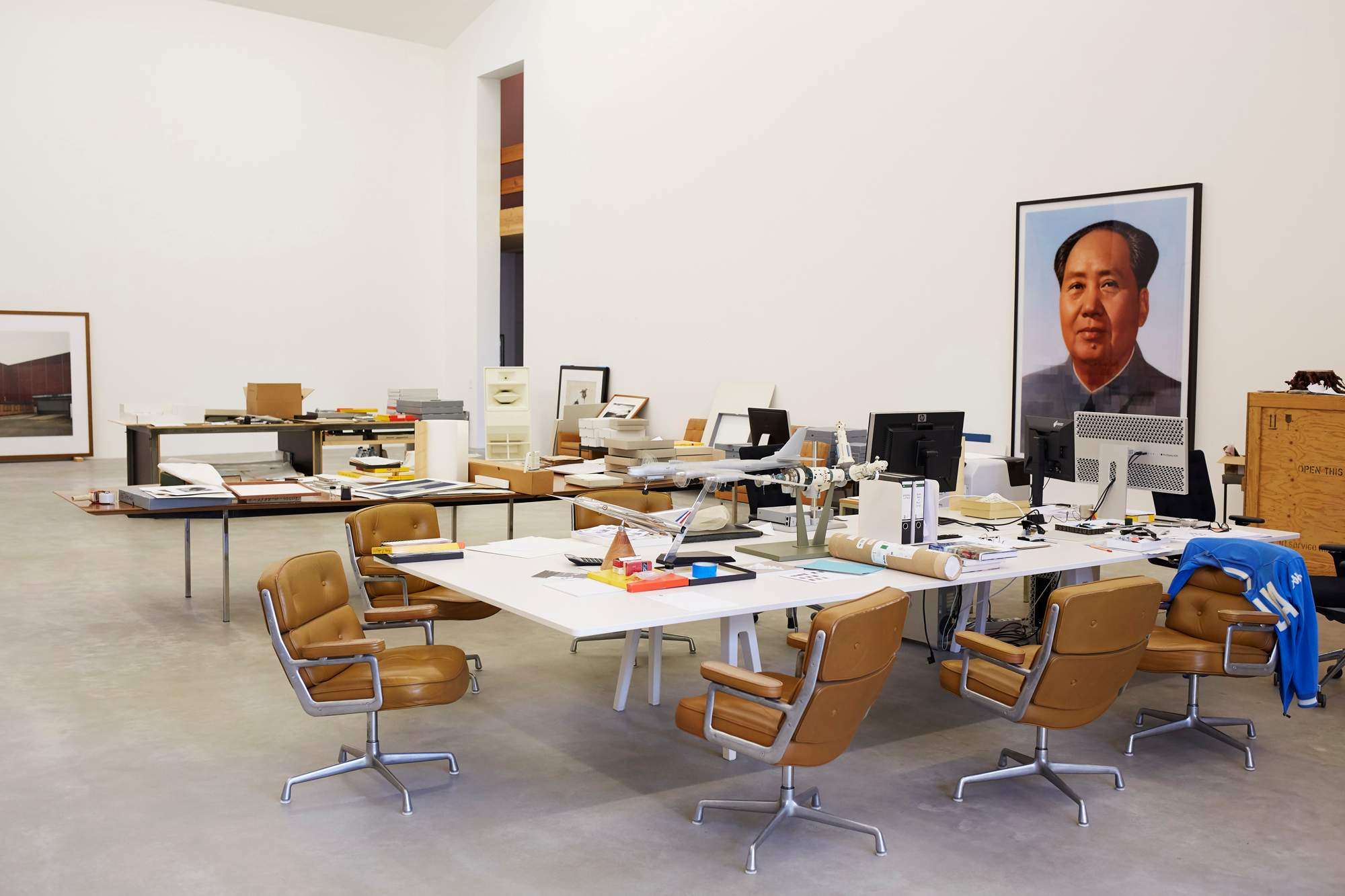
What led you to become part of the Düsseldorf School?
Studying photography at the Kunstakademie meant being alongside sculptors and painters. This helped us see the limits and possibilities of photography. The work of Andreas Gursky, Candida Höfer and others, it’s so diverse, it’s not a school, but art critics needed a drawer to put us in and they called it the Düsseldorf School.
What inspired you to source images from archives, newspapers and the internet?
After I made the “Interieurs” and “Portraits” series I was a pretty famous young artist and felt that art photography was a bit boring. I thought the artistic world was too small and wanted to go out into the world. At the same time, I had to realise that I cannot take all the photos I am interested in, be they astronomy or press shots. These are images and genres that I want to look at again in a contemporary way.
How do you approach your work?
All of it is kind of autobiographical. I stumble across something and if I cannot get it out of my mind, I make something out of it. I have a certain curiosity and then it’s like Peter Lorre says in M: “Will nicht – muss.” Don’t want to – must. I am driven.
2.
Skulptur Projekte, Münster
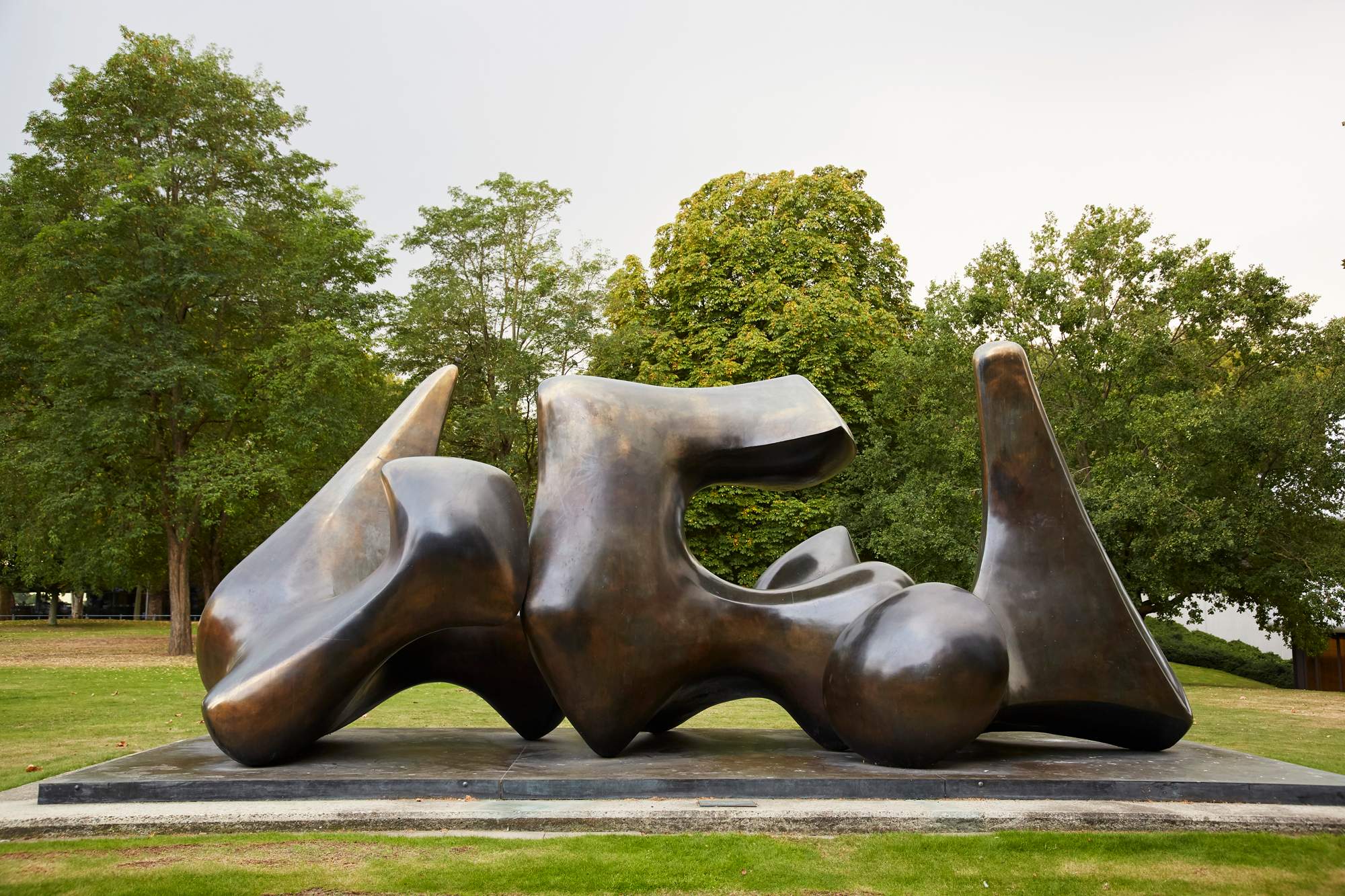
Once every 10 years, Münster transforms from a leafy German town into the centre of the art world for anyone with an interest in sculpture. The Skulptur Projekte, first launched in 1977 and held every decade since, has peppered the town and its green spaces with works by world-famous sculptors such as Donald Judd, Henry Moore and Richard Serra. Take a walk around Aasee and you won’t miss them; the giant pool balls on the waterfront, made by Claes Oldenburg in 1977, are a particular favourite.
skulptur-projekte-archiv.de
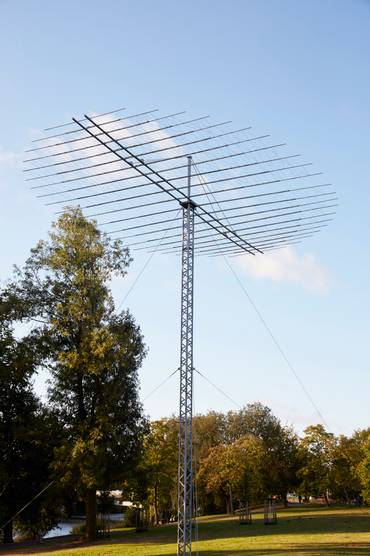
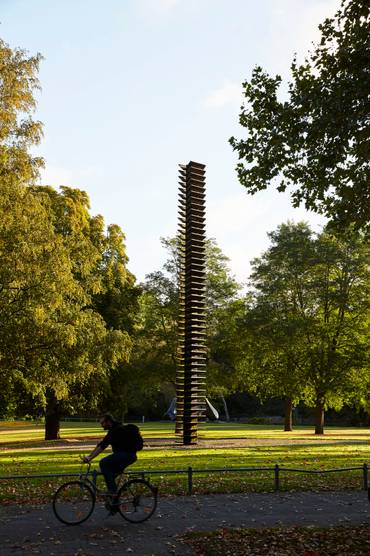
3.
Kolumba, Köln
Architect Peter Zumthor has made his mark across nrw with several projects, most notably the Bruder-Klaus-Kappelle, a tiny, stark chapel that sits in the middle of an arable field in Mechernich, south of Bonn. His most ambitious project, however, is the towering Kolumba art museum in Köln. Sitting on the site and incorporating the ruins of the St. Kolumba church, this beautiful block of a building houses a collection of paintings, drawings, sculptures and religious iconography dating from Late Antiquity to the present day.
kolumba.com
Museums north to south
Here’s our pick of nrw’s 1,000-plus museums.
The U, Dortmund
A former brewery that’s been turned into a centre for arts and creativity, featuring works of art from the 20th and 21st centuries, a cinema, library and more.
dortmunder-u.de
Kunstsammlung NRW, Düsseldorf
The state institution’s collection of 20th and 21st-century works is displayed across two venues.
kunstsammlung.de
Folkwang Museum, Essen
Designed by David Chipperfield, the Folkwang Museum is known for its international collection.
museum-folkwang.de
Moyland Castle, Bedburg-Hau
This neo-Gothic castle possesses the world’s largest collection of works by the 20th-century artist Joseph Beuys.
moyland.de
Museum Ludwig, Köln
Home to one of the world’s most significant collections of 20th and 21st-century art.
museum-ludwig.de
Bundeskunsthalle, Bonn
Located on Bonn’s Museum Mile, this gallery shows art from all eras.
bundeskunsthalle.de
Grandbrothers, Düsseldorf
Erol Sarp und Lukas Vogel met and studied at the Robert Schumann University of Music in Düsseldorf and in 2011 formed Grandbrothers, referencing their friendship and primary instrument – the grand piano. We caught up with the band, whose third album All the Unknown is due in January 2021.
What inspired Grandbrothers?
Erol: It began as a university project that quickly became more. It’s only in the last year or two that we decided to make a living from our music.
How do you create your distinct analogue-meets-digital sound?
Erol: Our grand piano is prepared with little hammers that beat the strings, creating harpsichord-like sounds. We experiment with sounds by manipulating the strings, adding elements comparable to an Ebow on a guitar to make them swing, rhythmically beating them, even placing books on them to distort the sound. The idea is that everything should come out of the piano.
Where do you want to take your music?
Lukas: The dream is to play overseas.
grandbrothersmusic.com
Design
More than meets the eye
There is a rich history of manufacturing in the region. Its reputation as an industrial powerhouse has left a culture of handicraft and artisanship that can be found in backstreet leather workshops, furniture ateliers in leafy suburbs and semi-rural cutlery factories. It’s time to meet the makers.
1.
Live Lab Studios, Düsseldorf
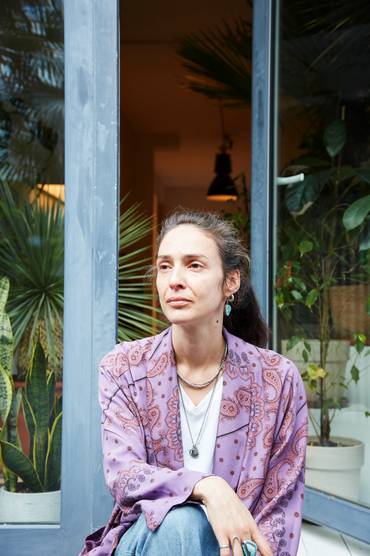
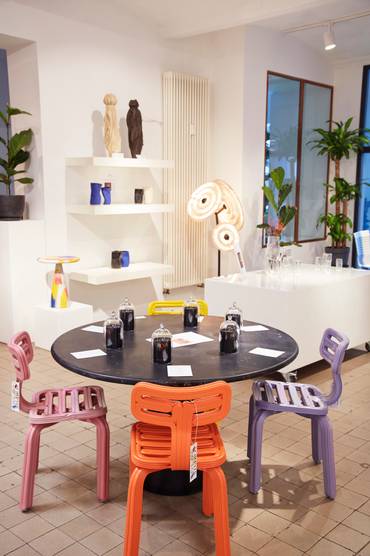
This summer, fashion designer Stephanie Hahn launched a new retail space: Live Lab Studios. The light-filled gallery is tastefully stocked with fashion, beauty and homeware items by makers from around the world, including Hahn’s own men’s and womenswear label 22/4. The ethos for the shop is handmade, sustainable pieces that endure. “Düsseldorf was missing something like this, something unconventional,” says Hahn, who hosts pop-up events, talks and dinners. “We want to be a meeting place where shopping is almost an afterthought.”
livelabstudios.com
2.
Mono, Mettmann
Wilhelm Seibel V runs his family’s fifth-generation cutlery brand Mono along with two of his sons. In 2006 the Seibels acquired flatware company Pott and now make more than 1,000 items by hand in their Mettmann workshop, ranging from teapots and knives to cast-iron fondue sets.

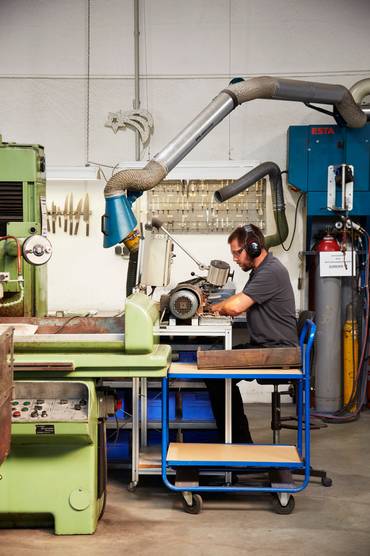
Some of the machines date back to the 1950s when the Mono brand – whose award-winning designs are exhibited at Moma and the V&A – was created. As the only German stainless-steel cutlery company that still produces everything locally, it’s good to see Seibel’s son Matthias carry on the family tradition as production manager. “We make products that have a soul,” says Seibel senior. “It takes 90 steps to make a single knife and each one is unique.”
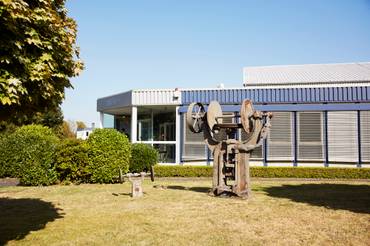
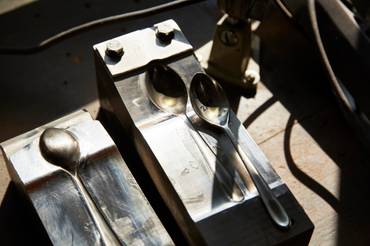
Mono and Pott’s designs are sold across Europe, the US and Asia. The products are time-tested and appealing and represent a tradition that continues to shape the area.
mono.de
3.
Embassy of Bricks and Logs, Essen
Niko Vatheuer and Eric Mirbach juggle the roles of business director, designer and marketer at their outerwear label Embassy of Bricks and Logs. The brand’s quality materials, relaxed cuts, minimalist colours and sustainable credentials are a hit. “I thought that fashion could be done in a better way,” says Vatheuer.
embassyofbricksandlogs.com
4.
Annette Görtz, Gütersloh
Loose, flowing womenswear in neutral tones has been made in Annette Görtz’s design studio in Gütersloh since she founded her label in 1984. Stockists from Liberty in London to Zig Zig Boutique in Hong Kong testify to her international appeal. She has shown in Paris and Milan and more recently in Kiev during Ukraine’s fashion week.
annettegoertz.net
5.
Cor, Rheda-Wiedenbrück
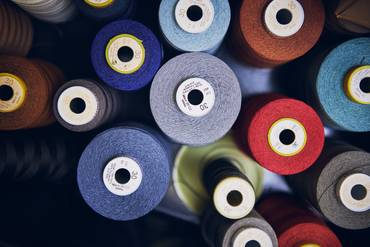
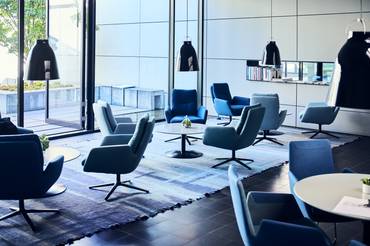
Rheda-Wiedenbrück, a satellite town of Gütersloh in East Westphalia, has made a name for itself as a furniture-making centre. Cor is at the heart of this story. Established in 1954 by Helmut Lübke and the prince of Bentheim-Tecklenburg, the brand has developed countless chairs and sofas following a mantra of functionalism: clean lines, solid construction and modularity. Though the royal co-founder quit the business not long after it was founded, the Lübke family continues to own and operate Cor.
cor.de
Peter Otto Vosding, founder of Vosding Industrial Design, Köln
After studying industrial design in Darmstadt and Köln, Vosding went to the Ingvar Kamprad Design Centrum at Lund University in Sweden on a scholarship from the Ikea Foundation. Following internships at Squareone and Kaschkasch he founded his eponymous studio in 2017 and was immediately selected as a finalist in the newcomer category at the German Design awards.
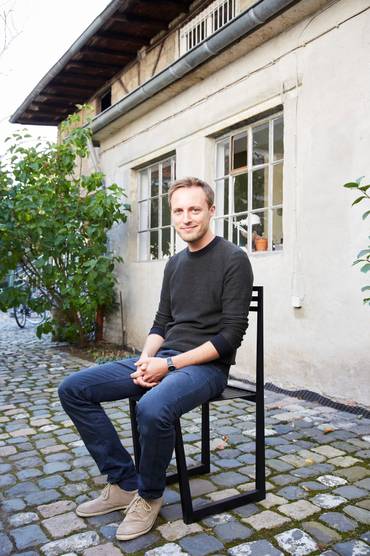
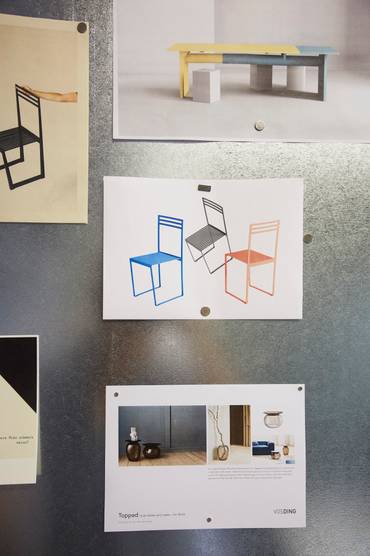
What are you working on at the moment?
I have designed a 3D-printed lamp for Gantri, a sustainable lighting company in California. It is based on a full moon rising over the German Alps. I also have a wall hook for Zilio inspired by a sledge and an upholstered bench for Stuhlfabrik Schneider.
Why is Köln good for designers?
We have at least three important design fairs. The international furniture and interiors fair IMM, Orgatech for offices and Spoga & Gafa for garden furniture. Then there’s Interzum for furniture suppliers. We are also close to Frankfurt, Paris and so on. I really like that it’s a community of young designers. There are a lot of independent designers and small agencies and we all know each other. It’s not only competition, it’s also helpful.
vosding.de
Architecture
Design for life
The state is shaped by its industrial past, particularly the Rhine-Ruhr region. Over the past few decades architects, such as Rem Koolhaas and Frank Gehry, have come in to transform and reinvigorate many of its former industrial sites. Modern additions contrast well with historic buildings and countless castles that can be found throughout the postcard-pretty state.
Creative neighbourhoods
NRW may not be as gritty as Berlin but creative neighbourhoods can be found in every city. There is Flingern in Düsseldorf with its independent shops and restaurants, the Medienhafen with its eye-catching architecture, Köln’s Belgian Quarter with its young designer shops and the Frankenberger Viertel in Aachen with its small shops, galleries and cafés. Also check out the Hafen of Münster with its converted warehouses, Essen’s Rüttenscheid for its live music festivals, Bochum’s artistic Ehrenfeld with its Schauspielhaus or the Utopiastadt in Wuppertal with its studios and co-working spaces.
1.
Sparrenburg Castle, Bielefeld
The castle is Bielefeld’s best known landmark, a stony fort dating to the 13th century complete with climbing ivy over the bastion and a dining hall and café. The visitor centre – all austere lines and concrete designed by Swiss minimalist architect Max Dudler – was added in 2014 and contrasts nicely with the castle’s gothic look.
bielefeld.jetzt/sparrenburg
Christoph Ingenhoven, Ingenhoven Architekten, Düsseldorf
Ingenhoven Architects, headed by Christoph Ingenhoven, is a world-renowned architectural firm founded in 1985. We spoke with Ingenhoven to gain more insight into his current projects across NRW.
Your projects take you around the globe. What makes Düsseldorf a good base?
Düsseldorf is bigger than it seems – you shouldn’t underestimate us. The city has a rich cultural life and the international airport is within easy reach. We speak 27 different languages at our firm and newcomers to Düsseldorf have always felt comfortable almost immediately.
What is your design philosophy?
I always ask what can a building do for the country, the city, the environment and its inhabitants. I want to create architecture where everything has been reduced and nothing can be taken away without leaving a hole in the façade. Kö-Bogen II [which features Europe’s biggest green façade] takes all of these factors into consideration. We examined the history of Düsseldorf and asked ourselves whether it’s possible to create a new space for the city.
Your projects, from Köln’s Dom Hotel to Pier One in the Medienhafen, always endeavour to create added value. How important is sustainability to you?
We always see how we can give back. The way to do so is to create green spaces in and around buildings, which we have done in Singapore and Düsseldorf. Another question is, can I produce the energy I need? The answer is yes and we did so with the Freiburg town hall.
What are your plans for the future?
We’re currently working on projects in Tokyo, Sydney and Singapore. My hope is to continue building in the big cities of the world because I think that they will decide our future.
ingenhovenarchitects.com

Bolles & Wilson, Münster
Julia Bolles-Wilson and Peter Wilson won the commission to design the public library in Münster and moved there to carry out the project in 1984. Though their buildings can now be found in cities from Korcë to Tokyo, the pair stayed firmly put in the West German town. Here Peter Wilson tells us a little more about their work.
Why did you move to Münster?
We wanted to start creating big public buildings: the library here was our first. Moving here was a way of moving from academia [in the UK] into practice. Also Germany has a healthy competition system: for every public building it hosts an open competition to give young architects, like we once were, a chance.
How have you found developing your practice in Germany?
We’ve built 50 or so buildings here so it’s been a success. And we’ve gone from being the young folks on the scene to established practitioners. Now we’re in our late phases and we’re trying to stay true to ourselves.
What have been your favourite projects?
One of the best was the Luxor theatre in Rotterdam. The clients would come to Münster not because we needed to meet but just because they wanted to talk about the building. It’s gratifying to have a client like that.
bolles-wilson.com
2.
Haus Lange Haus Esters, Krefeld
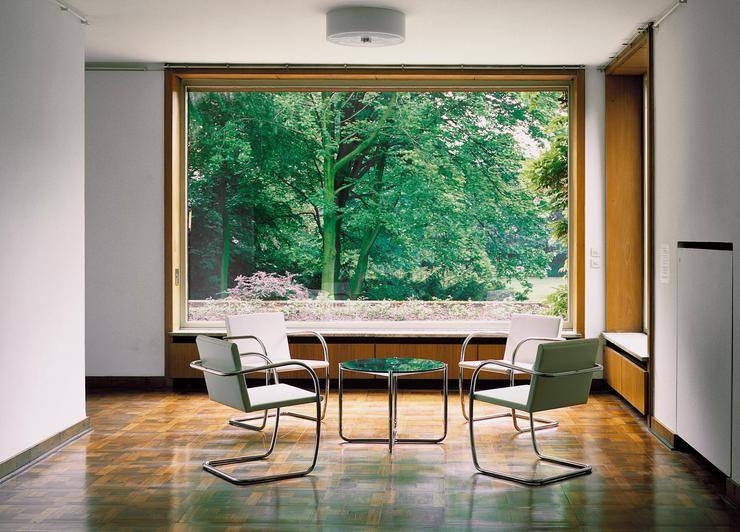
Ludwig Mies van der Rohe built these urban villas for his friends, Hermann Lange and Dr Josef Esters, who worked in Krefeld’s silk industry. The Bauhaus-style homes, featuring open spaces and large windows overlooking the sculpture garden, are now part of the Kunstmuseen Krefeld and host contemporary art shows.
kunstmuseenkrefeld.de
3.
Kadawittfeldarchitektur, Aachen
According to Kilian Kada, whose father co-founded Kadawittfeldarchitektur with Gerhard Wittfeld in Aachen in 1999, “the Scandinavian approach to urban planning is slowly coming to Germany”. The studio is focused on creating a dialogue and sustainable structures. “You can see that there’s a lot going on right now, especially when it comes to creating bicycle and pedestrian-friendly cities. Not only the buildings are important: so are the spaces in between.”
This philosophy shapes the firm’s projects, such as Cologneo, which will turn an old industrial quarter into a lively neighbourhood, the green RAG-Stiftung office building overlooking the Zeche Zollverein and Aachen’s Archäologische Vitrine Elisengarten.
kadawittfeldarchitektur.de
4.
Zeche Zollverein, Essen
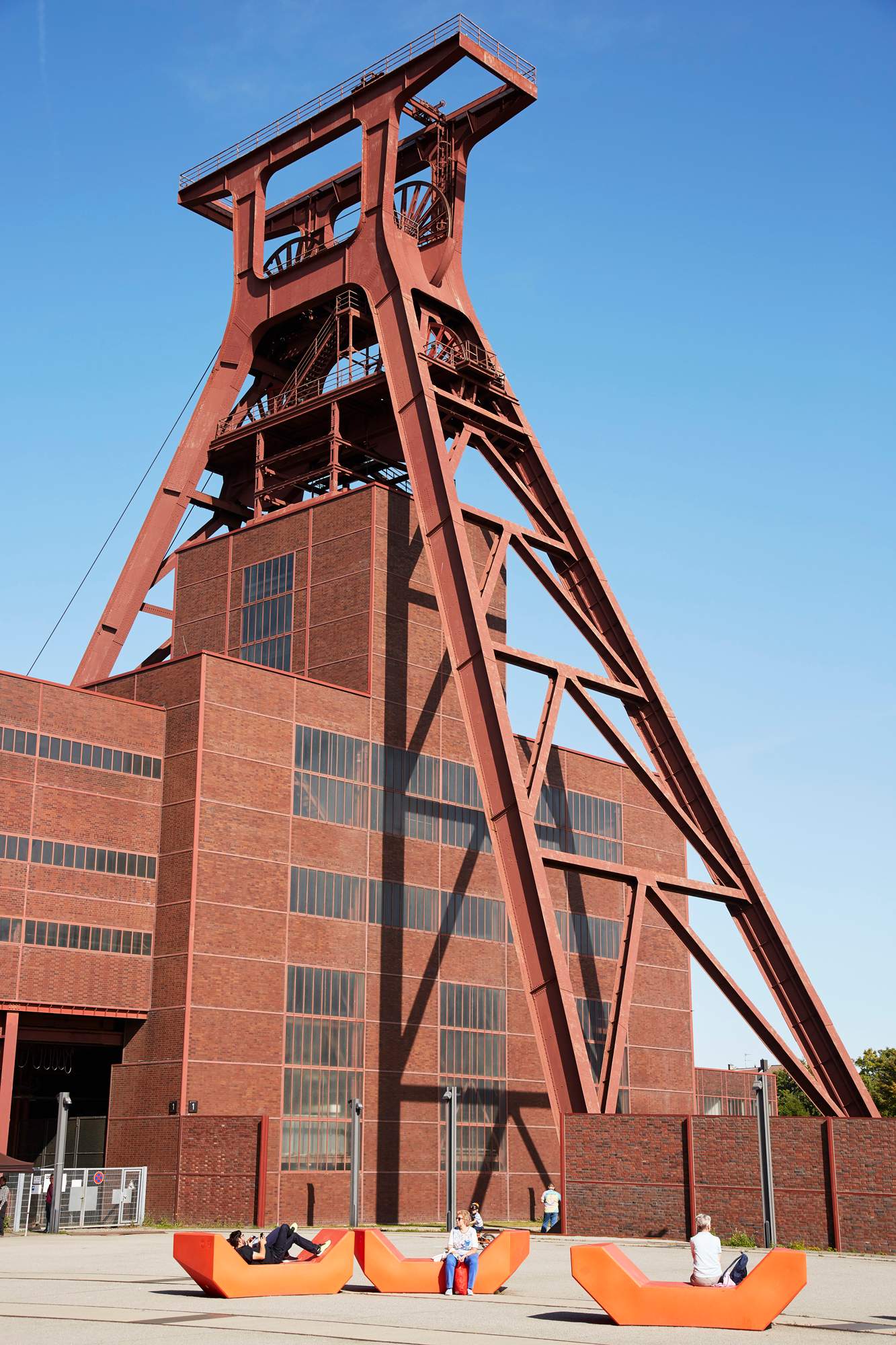
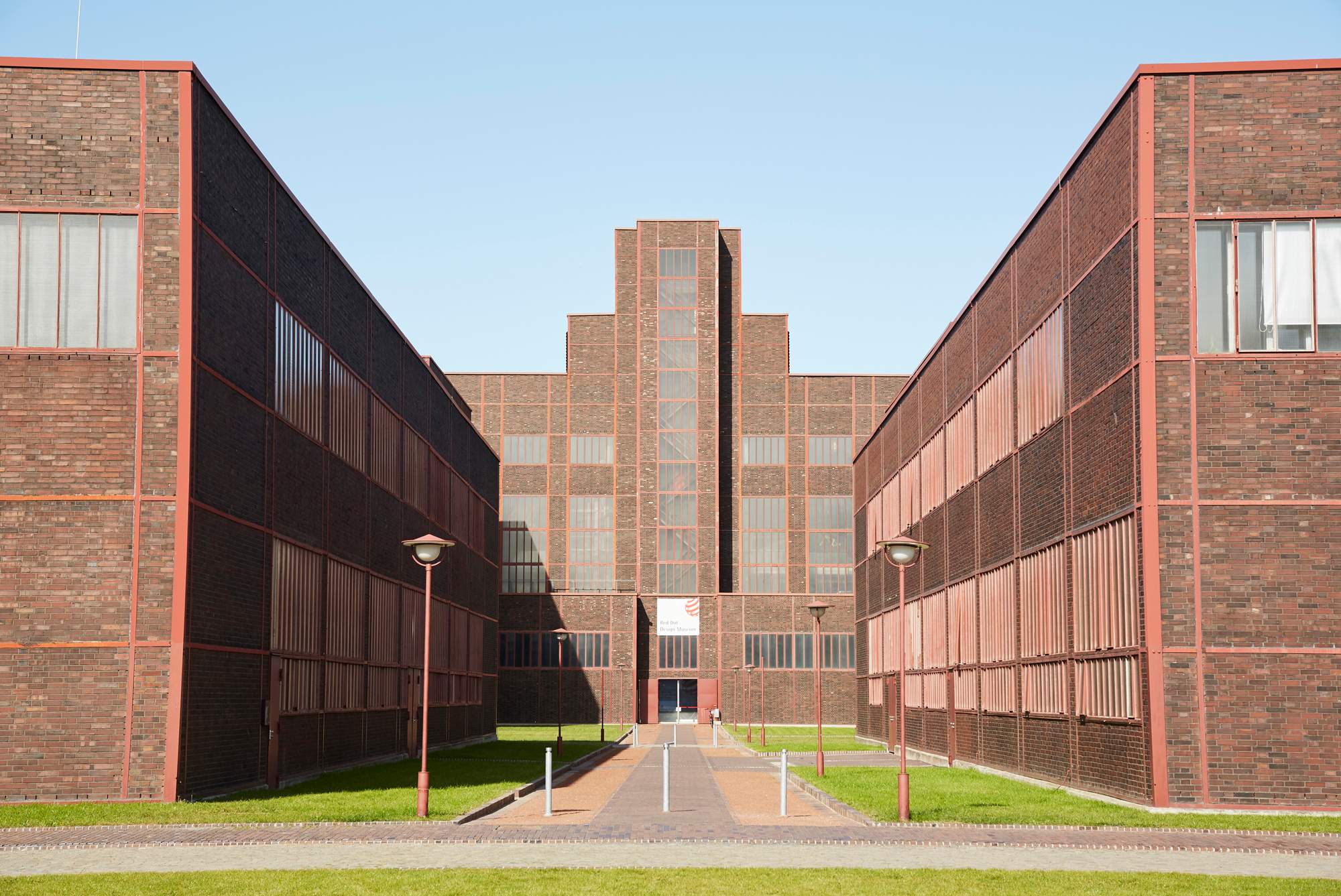
In 2018 Germany shut its last black-coal mine, closing the chapter on two centuries of mining history in the Ruhr region. The Zollverein Coal Mine Industrial Complex, originally built by architects Martin Kremmer and Fritz Schupp, acts as both a monument to the past and a cultural space to serve future generations. Across the complex, whose masterplan was designed by Rem Koolhaas, you’ll find highlights such as the Red Dot Design Museum in the former boiler house, the Ruhr Museum and the impressive steel frame of shaft XII.
zollverein.de
Architecture
Refit for purpose
5.
Langen Foundation Hombroich, Neuss

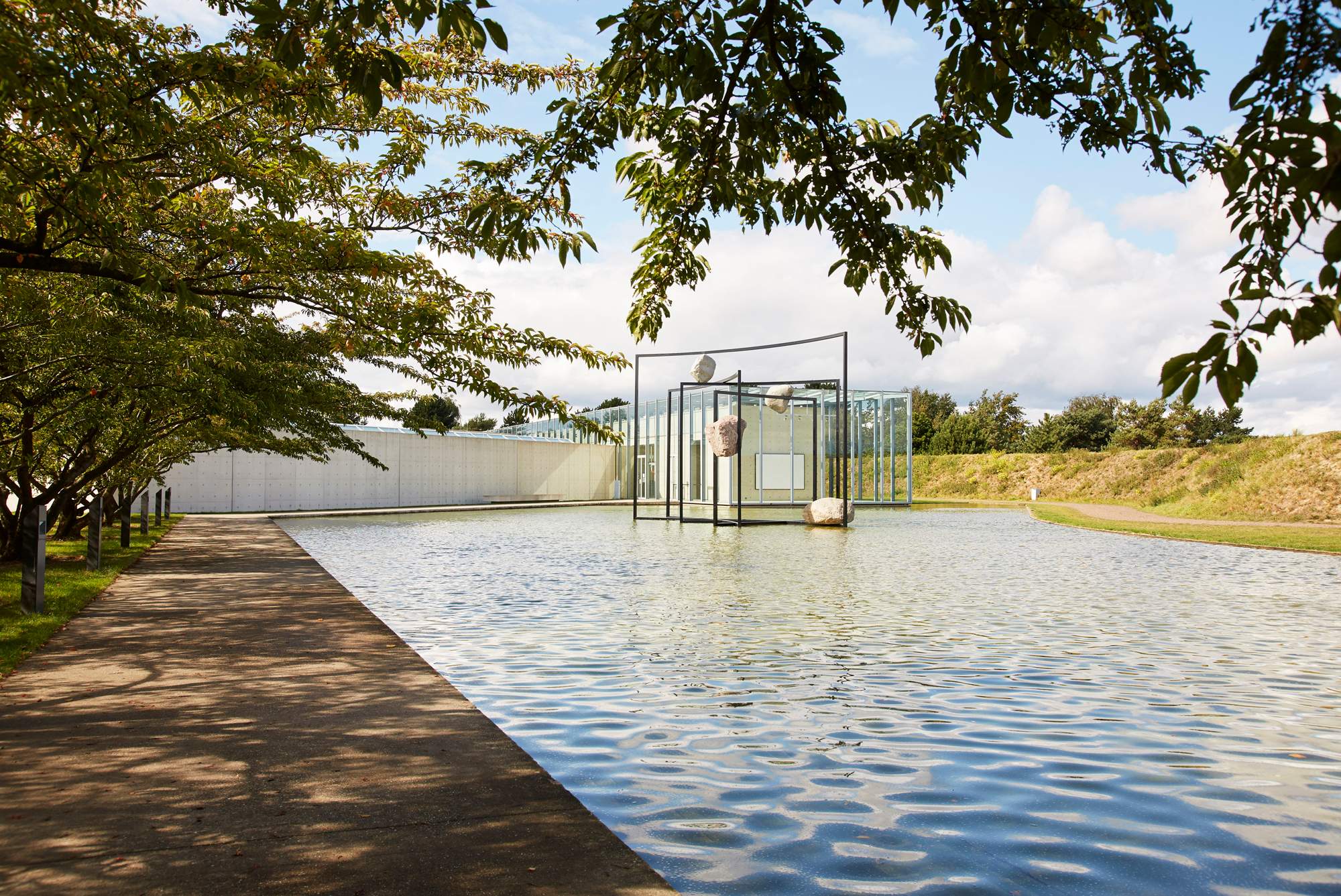

The Langen Foundation sits on a former Nato base where warheads for cruise missiles and Pershing rockets were once stored, surrounded by nothing but fields. In 1994 collector Karl-Heinrich Müller created a plan to repurpose the site and invited Japanese architect Tadao Ando to design a home for Viktor and Marianne Langen’s art collection, which features Japanese art and pieces collected on their extensive travels. Marianne Langen described the building, which opened in 2004, as “the greatest work of art I have ever acquired”. The concrete, glass and steel structure forms a striking contrast to the elaborate art from around the world within and the verdant landscape outside.
langenfoundation.de
6.
Schwebebahn, Wuppertal

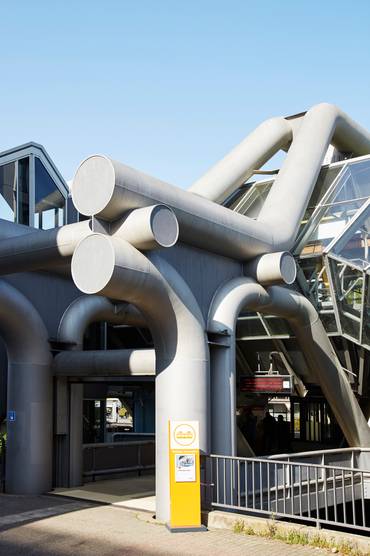
When the world’s first electric suspension monorail, designed by Eugen Langen, opened in 1901 it was ahead of its time. Today it’s a landmark. The so-called floating train runs 13.3km along the River Wupper at a height of 12m, connecting 20 stops including the main train station. Some 24 million passengers board the Schwebebahn every year; its steel structure and blue Generation 15 cars – which won the If Design award in 2017 – are a familiar sight throughout the city.
schwebebahn.de
Leisure
All Systems go
1.
Sail on Aasee, Münster

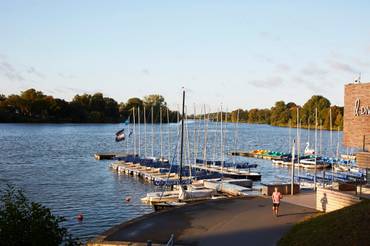
The serene waters of Münster’s Aasee lake are the perfect place to take a sailing lesson from Overschmidt, which claims to be the oldest sailing school in Germany. It also offers ferry tours for those averse to hoisting the mainsail. Once you’re done, enjoy a plate of salmon and a glass of riesling on Zum Himmelreich’s terrace. And try the brownie in chocolate sauce for dessert – you’ve earned it.
overschmidt.de; zum-himmelreich.de
2.
Go river rafting
Grab a buoyancy aid and pick up a paddle – we’re going white-water rafting. Tours along the Ruhr embark from the quaint medieval town of Hattingen, where an expedition with rafting rental company Querfeldeins will carry you through the former industrial heartlands of the region. Many of the mines and quarries here are now overgrown with lush greenery, making this a charming way to enjoy the nature of nrw on the way to Essen. The company also offers trips that set off from Düsseldorf, during which you can experience the choppy waters of the Erft and Rhine rivers first-hand.
querfeldeins.org
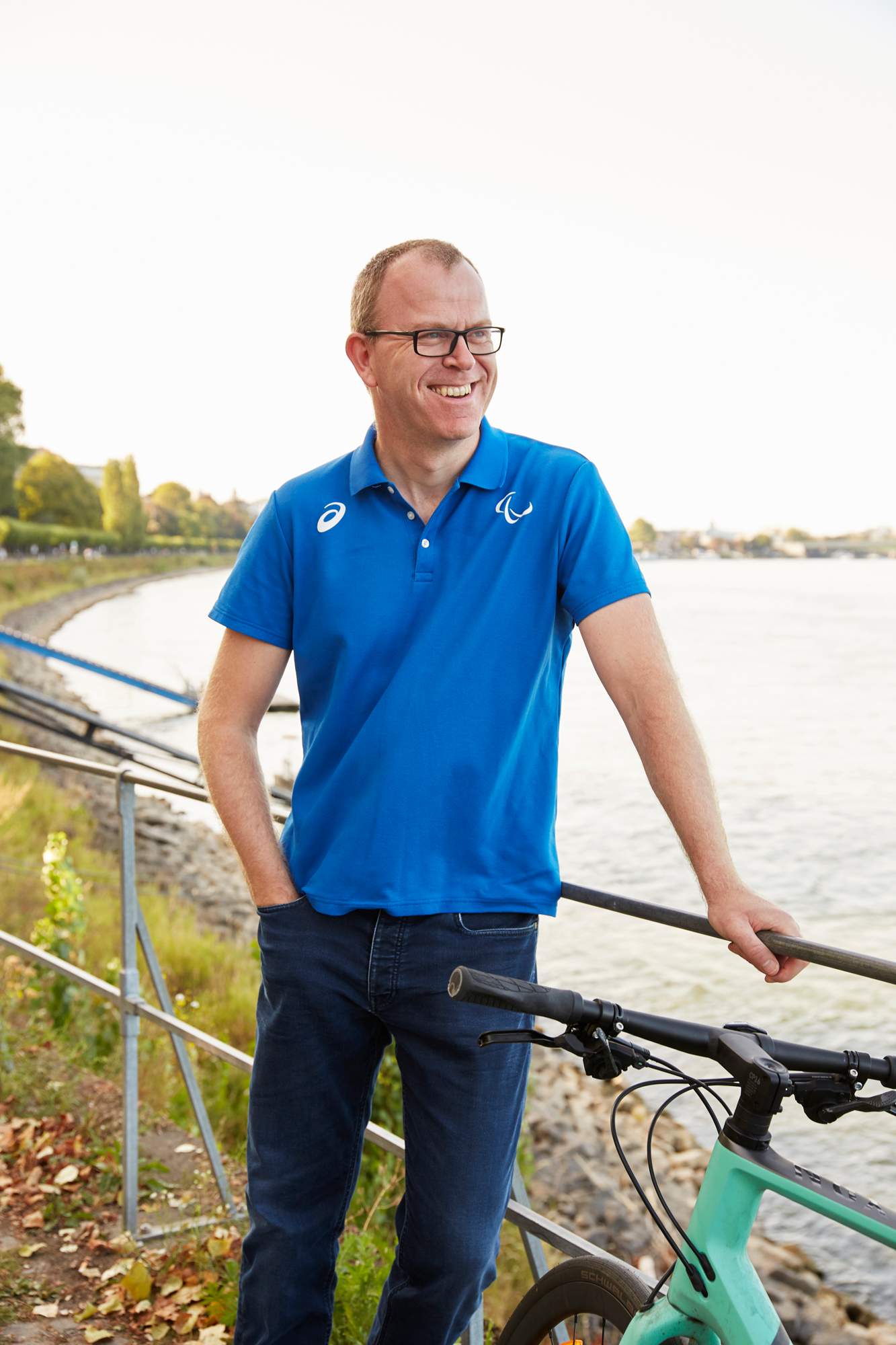
Craig Spence, International Paralympic Committee, Bonn
Since joining the ipc in 2010, Craig Spence has overseen the Paralympic movement’s exponential growth in terms of media coverage, overall awareness and public enjoyment.
How is Bonn as a base?
When we first came here we had three full-time members of staff. We’re now at 140. The city has been hugely supportive of the Paralympic movement. The infrastructure in this state is also sensational. Working for the ipc means lots of overseas travel and there are great links from Köln to the rest of Europe. If you need to go further afield you can use Düsseldorf or Frankfurt airports. Bonn is the perfect city for us.
How accessible is Bonn?
It’s tremendously accessible to get around. It’s a smallish city but with the transport infrastructure of a capital. For our workforce, many of whom use wheelchairs or have vision impairments, it’s brilliant.
What are the locals like?
Great. They’re used to this city having a high profile from when it was the capital and they’ve embraced the international organisations.
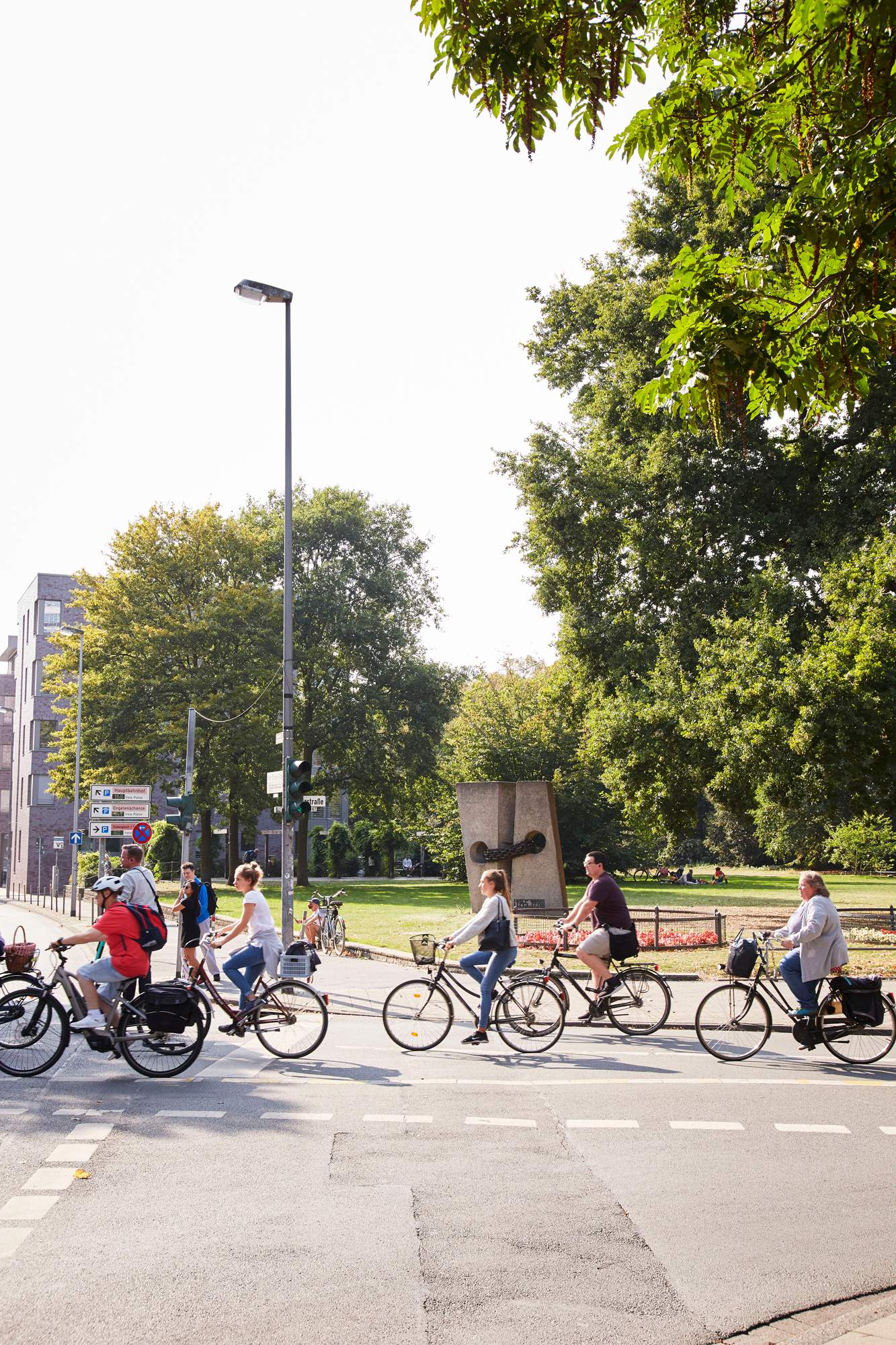
Cycle around the state
You’d be hard pushed to travel far in any of nrw’s cities without encountering a bike weaving its way around town. There is something eminently cyclable about urbanana. Every city has its own wonderful web of cycle lanes – Köln’s 12km trip across its two main bridges over the Rhine, for example, or Münster’s many routes.
For the budding Erik Zabels among you, the statewide network of cycle paths covers almost 29,000km and links every city. But don’t worry, there are more than 700 “bed & bike” establishments on the route in which to recover from your exertions.
3.
Take in a Bundesliga match
Germany’s Bundesliga consists of 18 football teams, several of which regularly draw crowds in excess of 50,000. Although Bayern Munich is the most successful – the club has won the championship 29 times since 1962 – nrw’s own Borussia Dortmund (bvb) competes fiercely, especially with Schalke 04 in the Ruhr area.
bundesliga.com
4.
Swim in the lakes
nrw is awash with natural lakes and inland pools. The waters of Offlumer See are a highlight – the former quarry now features a beach and waterside café. Other good spots for a dip include the Bergisches Three, a series of reservoirs in Wuppertal, Solingen and Remscheid. The Remscheid opens in summer to swimmers, canoeists, anglers and sailors.
offlumer-see.de

Visit an urban beach
Bonn and Köln have wonderful river promenades but some of the best urban beaches are in Düsseldorf. Although it’s not safe to swim in this section of the Rhine, the river offers bankside spots to sunbathe and dip your toes in the water. Summer crowds flock to these stretches of sand to soak up the sun and light barbecues on warm nights. The historic villages of Kaiserswerth and Meerbusch offer plenty of options, as does the Rheinstrand Lörick (“small Hawaii”) and Paradiesstrand, with its city views. For swimming and water sports, head to Xanten where an old gravel pit has become the Naturbad Xantener Südsee.
f-z-x.de/strandbad-2
Marina Ponti, United Nations, Bonn
As head of the UN’s drive towards a more sustainable world, Marina Ponti is an optimist. From her offices at the UN HQ in the old Langer Eugen parliament building, Ponti aims to spread hope for a better future.
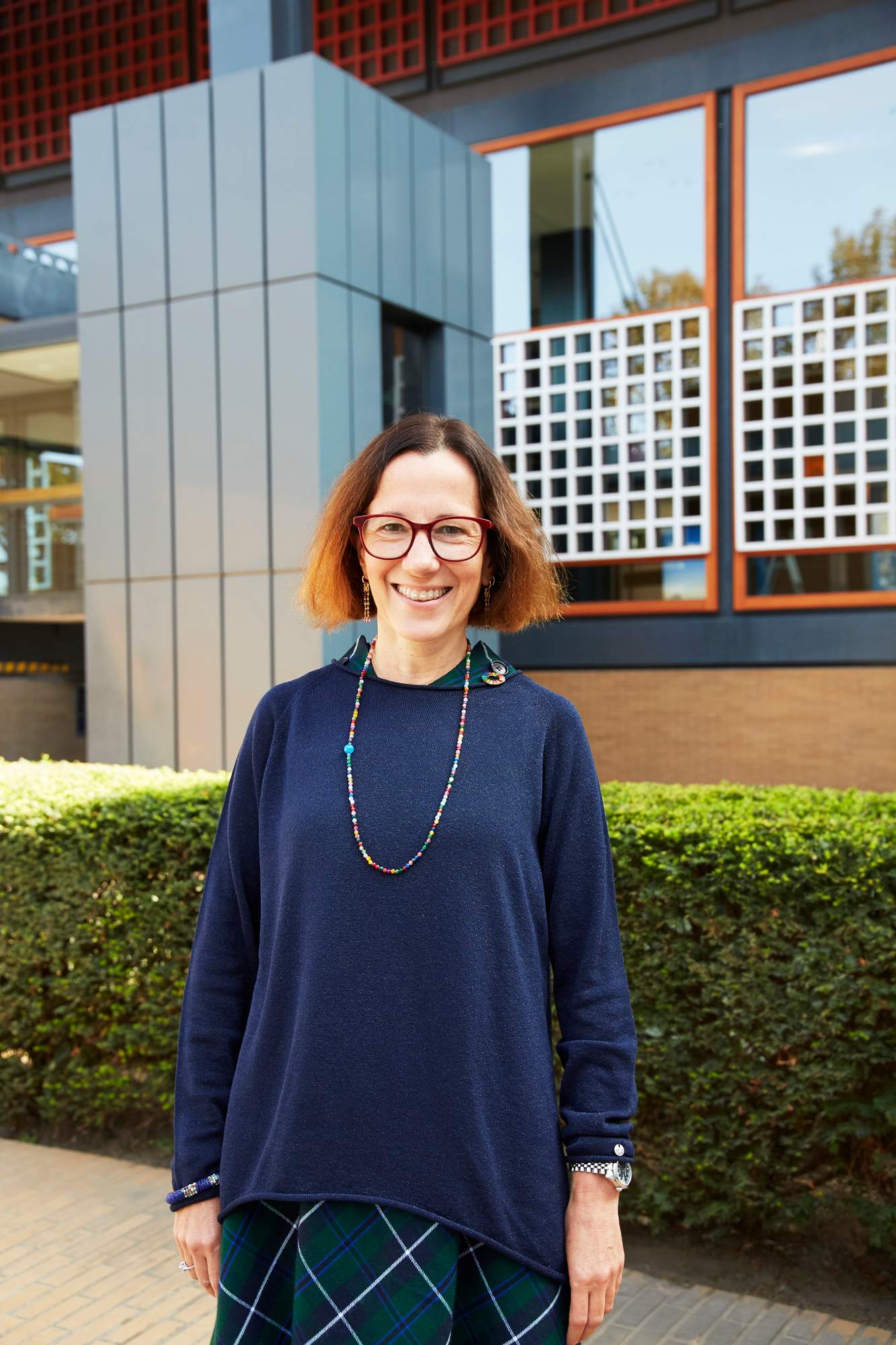
Why are you in Bonn?
Before I joined, the Sustainable Development Goals (sdg) campaign was based in New York. Because the German government is committed to sustainability, sdgs and our whole 2030 agenda, they invited the campaign to move to Bonn, supporting us with offices and the like. It is good for us to be here because we are next to the UN and can see colleagues with whom we work closely. We have the desertification department on the 15th floor and the World Trade Organization. So there are several initiatives that are also dealing with sustainability and some of that has to do with sdgs. We brought a lot of colour to the city, a lot of action and a lot of creativity.
Does the city live up to the goals?
Bonn is green. It’s conducive to the innovation of creativity, of peace. There are other interesting organisations here such as the International Paralympic Committee (see previous page), with whom we share a similar mandate in showing optimism to people. We now work closely together and met because we were in Bonn. Maybe we would have never worked so closely otherwise.
Savour the flavour
What do you fancy? The best Japanese food in Germany, a twist on authentic Italian or just a good old-fashioned Sauerbraten pot roast with potato dumplings and red cabbage. When it comes to cuisine, NRW is not for the faint of appetite. Expect colossal portions of toanotch nosh washed down with lashings of regional beer.
Where to stay
Ardi Goldman’s 25Hours outposts in Köln and Düsseldorf are well situated and styled with his typically considered, eclectic eye. If you’re heading further north then we’d recommend you make for the Schlosshotel Hugenpoet in Essen.
25hours-hotels.com;
hugenpoet.de
1.
Little Tokyo, Düsseldorf
First drawn to Düsseldorf for its steel industry, the city’s Japanese community – the third-largest in Europe after London and Paris – has formed its own Little Tokyo around Immermannstrasse.
kyoto-japan.de
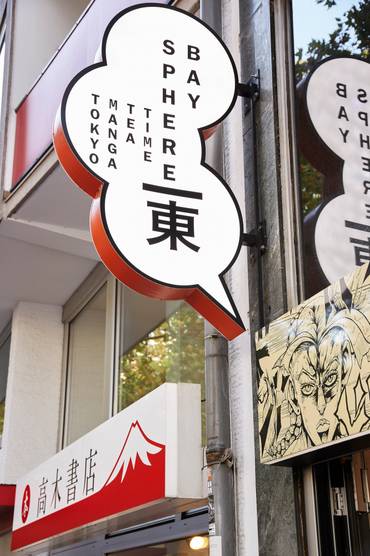
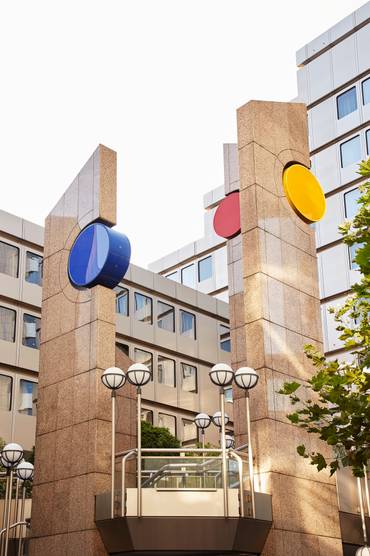
Stay
Hotel Nikko Düsseldorf
This 393-room hotel with a Japanese aesthetic has a Tokyo-esque karaoke booth in the basement.
nikko-hotel.de
Shop
Takagi Books
Find inspiring graphic design and stationery at this Japanese outlet.
takagi-books.de
Kyoto
Visit this shop for a huge range of tasteful homeware.
Drink
Anmo Art/Cha
Hosts tea tastings and sells artisan crockery and contemporary art.
anmo-art-cha.com
Eat
Takumi
Head here for ramen, noodles and spices imported from Hokkaido.
takumi-duesseldorf.de
Bars to hop
The Barley, Bielefeld
Enjoy a coffee-infused negroni house special to a soundtrack of smooth jazz in this laid-back basement bar. But make sure that you book ahead: the joint is popular and tables are limited.
‘Trinkhallen’, Köln
Köln is known for its Trinkhallen – corner kiosks that sell booze to civilised revellers who then drink it in the street. Popular with the huge student population, one of the city’s best bars for a boogie is Acephale, where the draft Kölsch beer is particularly good.

2.
Dackel brewery, Münster
Founded in 2017, Dackel aims to convince the conservative beer drinkers of Münster that there is more than just Pilsener. “We want to show them how exciting beer can be,” says Sebastian Holtmann, head brewer of the two-man microbrewery whose seven ales offer a twist on typical flavours. “We must be the smallest brewery in Münster but we’re bringing something new.”
dasdackel.de
3.
Regional recipe: ‘Himmel und Ääd’
It’s not easy to pick a single dish to represent the diverse state of nrw but Himmel und Ääd is a classic. Translated it means “heaven and earth” – it uses simple ingredients but it tastes like heaven on earth.
Ingredients (serves 4):
1kg potatoes
50g butter
¼ litre milk
6 apples (Boskoop preferred)
3 tbsp sugar
500g shallots
1 black-pudding sausage (optional)
1 lemon, juiced
Pinch of salt and nutmeg
Some water and flour
Preparation:
1. Mash the peeled and boiled potatoes, add the heated milk, butter, salt and a pinch of nutmeg, and whisk.
2. Season the peeled, cored and quartered apples with sugar and lemon juice and boil them in a little water until soft. Mash them coarsely and then mix them into the mashed potatoes.
3. Cut the shallots into strips and roast them until golden brown. Then cut the peeled black pudding into slices. Flip these lightly in flour and fry them crisply on both sides.
4. Place the purée on the plates, topped with slices of black pudding and roasted onions. Guten Appetit!
Restaurants to visit
Setzkasten, Düsseldorf
Family-run supermarket Zurheide is unique in having a Michelin-star restaurant in its Düsseldorf branch. Headed by chef Anton Pahl, Setzkasten’s menu changes frequently to showcase seasonal ingredients.
setzkasten-duesseldorf.de
GlückundSeligkeit, Bielefeld
With stained-glass windows and space inside and out, this former church now draws food pilgrims.
glueckundseligkeit.de
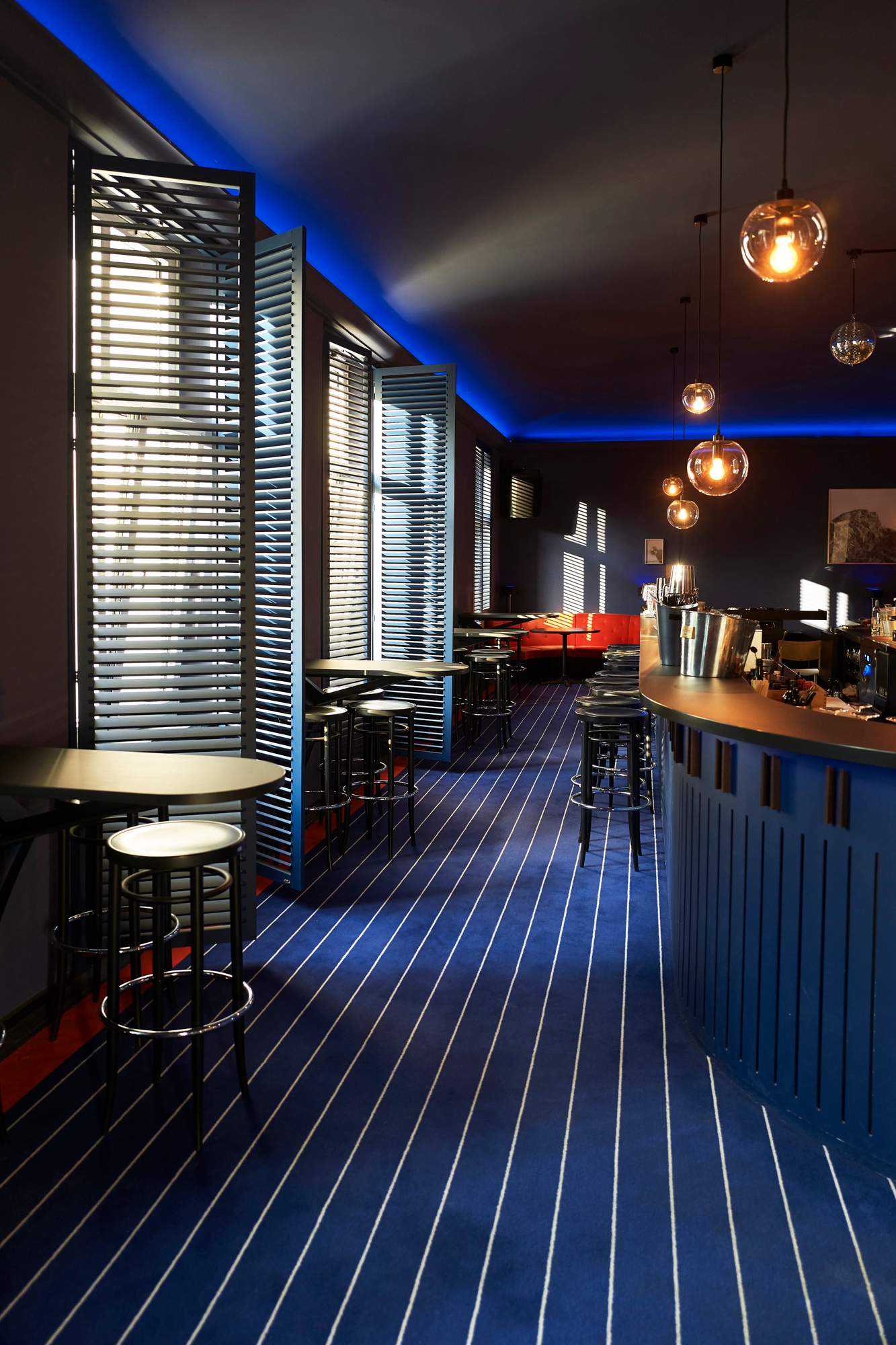

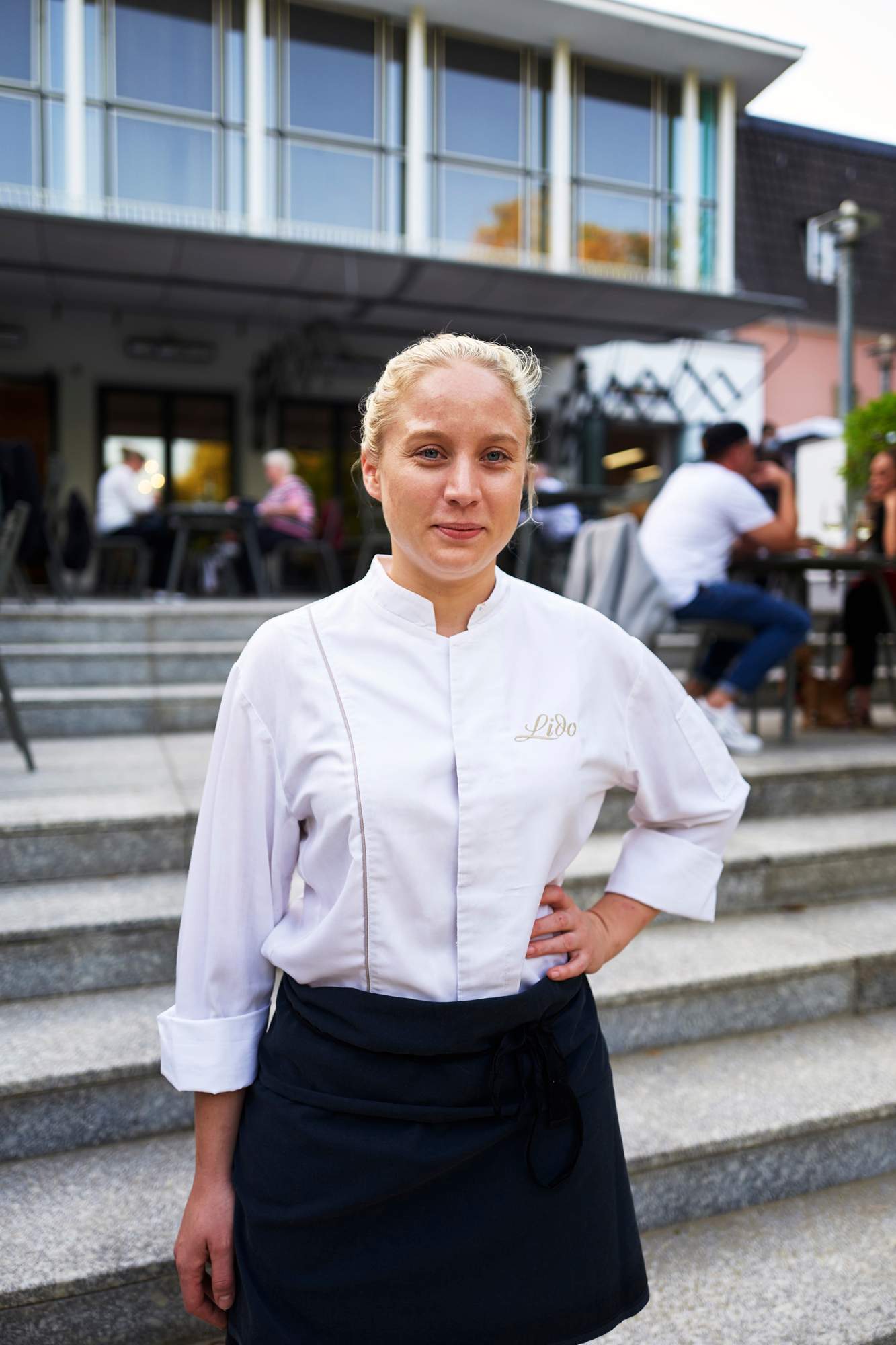
Holstein’s, Münster
This delicatessen provides the best cured meats, baked goods and wines. Order then perch at one of the tables outside to watch the city pass by.
butterhandlung-holstein.de
Lido Malkasten, Düsseldorf
Chef Florian Ohlmann’s Lido group has some of the best restaurants in the region and Malkasten is the jewel in its crown. Head chef Hannah Kreymann sends fine seasonal dishes into the artist-designed dining room.
lido1960.de
Heinemann, Mönchengladbach
A family-run institution with several outlets across the state, the Heinemann confectioneries and restaurants supply many a sweet treat.
konditorei-heinemann.de
La Fonda, Köln
In a leafy old-town square, La Fonda welcomes a smart set to its terrace and bar for Italo-German classics.
lafonda.koeln
4.
Here for the beer
nrw has many specialities but nothing is as territorial as beer. Kölsch is almost as old as Köln cathedral while Altbier is historically brewed in Düsseldorf. Around Bonn you’ll find Bönnsch on the menu and in the Eifel you should order a pale Eifeler Landbier. A safe choice is Pilsner, made to beer purity regulations by the biggest breweries across the region.
5.
Kantine Bundesrechnungshof, Bonn
If you’re a fan of architecture then check out the canteen in Bonn’s Bundesrechnungshof federal audit office, which is an exquisite throwback to the 1960s. An added bonus is that if you’re lucky you might also get to join the queue with the workers for a delicious Schnitzel bathed in hollandaise sauce.
catering-guenther.de
10 essential experiences
Ten ways to tie-up a trip
We have done our best to fill you in on the people and places that make urbanana tick, but it would be remiss not to mention some of the unmissable and extra-curricular activities and entertainments that take place across the region. Why not wind down with a carnival parade or wind up with a spot of skiing in Winterberg?

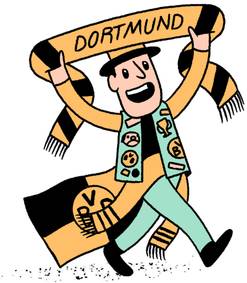
1.
Watch a home game
Hardly any other German state values football as much as nrw. It’s not just the most popular sport, it’s also part of the fabric of regional culture. You’ll be able to spot Borussia Dortmund (bvb) fans from miles away thanks to their top-to-toe yellow-and-black outfits. Enjoy the buzz.
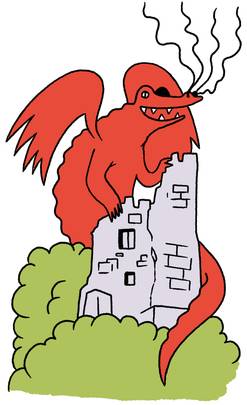
2.
Hit the slopes
It’s not just Bavaria that’s blessed with snowy peaks; nrw has its own winter wonderland in aptly named Winterberg. With 83 ski and toboggan runs and about 170km of cross-country ski trails, this resort is the heart of the Wintersport Arena Sauerland. Last one down buys the beers.
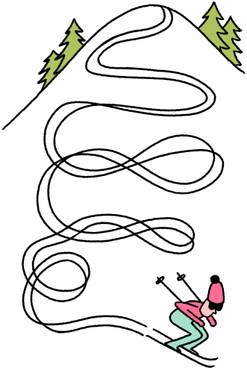
3.
Take a hike
Yomp the Siebengebirge, a range of hills southeast of Bonn that served as inspiration for many myths and Brothers Grimm fairy tales, including Snow White. The most prominent sight here is the Drachenfels ruin overlooking the Rhine. It dates from 1167 and was first brought to fame by British poet Lord Byron. Worth the climb.
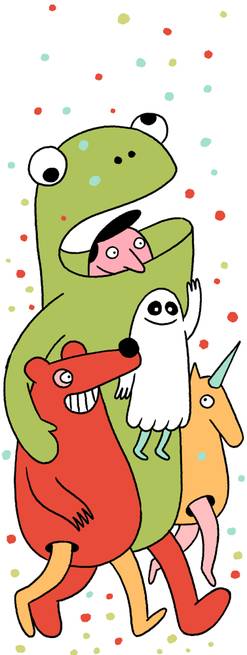
4.
Celebrate carnival season
Slip on your fancy dress and shout “Helau” and “Alaaf” (only in Köln) while watching the carnival parade, an annual tradition that dates back to 1296. Carnival season begins on 11 November and builds up to the big celebration in spring. The highlight is a procession with floats and people in costume on Rosenmontag (Shrove Monday).

5.
Drink local
In Düsseldorf, aka “the longest bar in the world”, the very many pubs brew and serve the city’s traditional Altbier. Bottoms up.
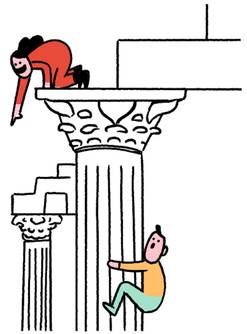
6.
Do as the Romans did
The Romans left their mark on nrw too. Venture out to the more than 2,000-year-old Roman town of Colonia Ulpia Traiana in Xanten. Once one of the largest Roman settlements north of the Alps, it has been transformed into an open-air archaeological park that’s worth a visit as much as the charming city of Xanten itself.
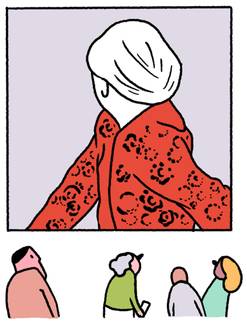
7.
Go to a gallery
Kick off your tour of nrw’s art scene with some gallery hopping in Düsseldorf and Köln – don’t miss the Julia Stoschek Collection. Then head to the museums and check out the famous Kunstakademie, whose alumni include Gerhard Richter and Anselm Kiefer. You’re in good company.
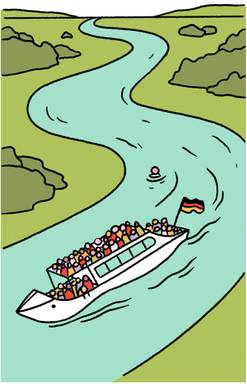
8.
Ride the river
Cycle or cruise along the River Rhine, which flows 1,230km from the Swiss Alps into the North Sea, to get a real sense of nrw.

9.
Meet the neighbours
Take a road trip across nrw (with 30 Autobahnen,this is the state with the densest transport network in Europe) and stop off in neighbouring Belgium or the Netherlands, as many do, for a day out in Antwerp or a weekend by the beach in Domburg. nrw’s prime location is hard to beat.
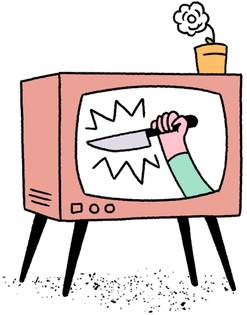
10.
Tune in
Spend your Sunday night watching Tatort (Crime Scene) with the rest of the country, which is on at 20.15 cet following the Tagesschau – the beloved news bulletin. The classic way to end the weekend in the know.

